How to make a Pettinice fondant flower cake with Tracey van Lent
What you will need:
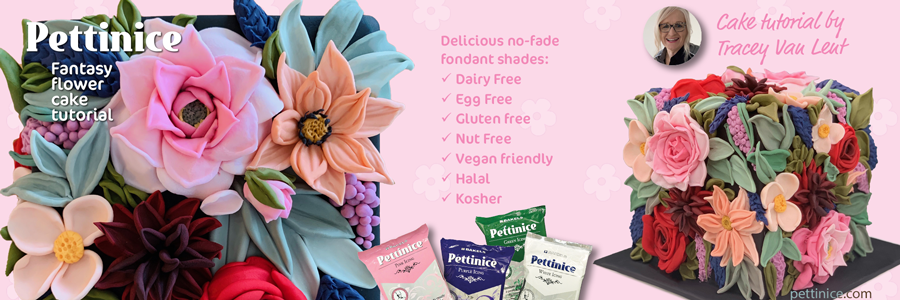
.
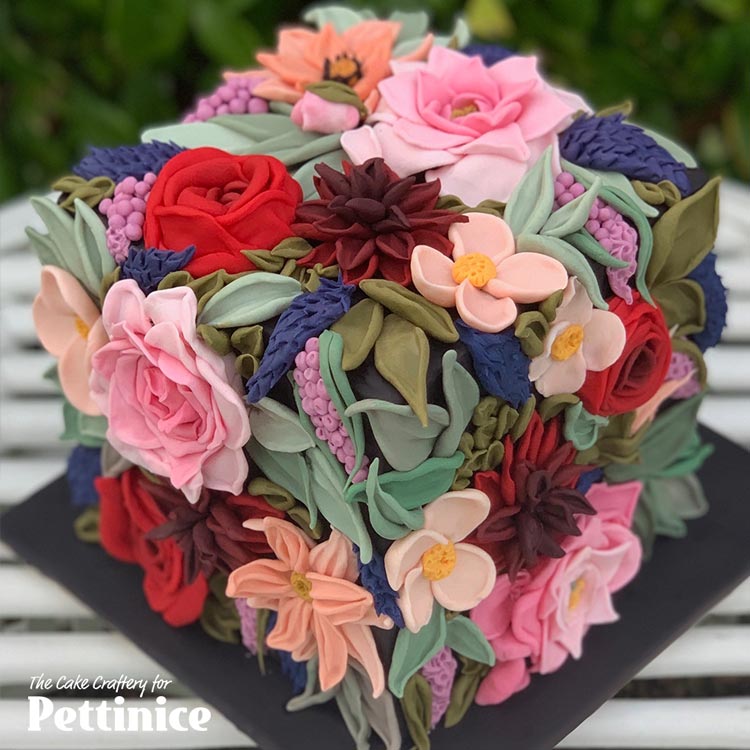
Create this fun floral cake with Tracey van Lent
Equipment
- Dresden tool
- Ball tool
- Small scissors
- Sponge for shaping on (or use palm of your hand)
- Small food-safe paint brush
- Pins
- Pointed tool or cocktail sticks.
- Small scales if you want to follow colour mixes.
Edibles
- Pettinice fondant - black, white, colours as follows
- Edible glue of your choice - you can use edible glue, piping gel, royal icing, or even Isomalt (which holds almost instantly!)
- Cornflour/cornstarch or vegetable fat, used sparingly, to prevent sticking.

Prepare your colours
You can use any colour palette but to replicate these colours you can mix Pettinice colours as follows, the ratios in brackets refer to the colour mixing charts found here.
Quantities given will make enough leaves and flowers to cover a 14cm cube cake. This is an approximate guide as sizes and thicknesses of leaves and flowers will be slightly different for each person making them.
- Sage Green for main leaves - Mix Pink 125g with 7.5g Green (50:1), then add white to some for variation of tint
- Dinosaur Green for filler leaves - Mix 80g Orange with 4g Blue (20:1)
- Pink for larger roses - For centre petals mix 15g White with 15g Pink (1:1)
Next row is 25g White with 5g Pink (5:1). Outer petals mix 20g White with 1g Pink (20:1) - Burgundy for dahlias - Mix 60g Red with 2g Blue and 1g Black (60:2:1) Split this in half. Reserve one half for your 2nd row of petals. Take the other half and add another 0.5g Black to it for your 3rd (central) row of petals. For the first row of petals, mix 40g Red with 1g Blue.
- Ruby and Red for smaller roses - Use burgundy for centres (there should be a little left over from dahlias, if not, mix 25g Red with 2 g Blue. Mix ruby red for 1st 2 rows of petals - mix 25g Red with 0.5g Blue. For the 3rd row, mix 50g red with 0.5g blue. For the outer row of petals use 50g Pettinice Red.
- Peachy orange for star-shaped flowers - Mix 50g Pink with 20g Yellow (50:20), once mixed break off a 25g piece and reserve for the darker inner petals. Add 25g White to the remaining 45g piece to make a lighter peachy colour for the outer petals.
- Pale peach for 4-petal flowers - Mix 35g White with 2g Pink and 1g Yellow.
- Berry sprays or lilac sprigs - Mix 75g Pink with 1.5g Purple for berry sprays (50:1)
- Deep royal blue wisteria - 50g Blue mixed with 50g Purple
- A little golden yellow for centres - You don’t need much so just take a 10g ball of Yellow and add the tiniest speck of Red.
Extra fondant scraps to make base disks for the flowers if not forming directly onto the cake.
The main method to form nearly all the petals and leaves for this cake is to make sausage shapes with both ends tapered for leaves and leaf-shaped petals, or a teardrop shape for rose petals, flatten along the length with a ball tool, and then refine with a Dresden tool. This shape will replicate the shape a standard palette knife might produce with oil paint. The other rounder petals are made by starting with a ball and pressing a ball tool into the centre of it. The look we are going for is not the delicate thinly rolled petals of gumpaste flowers. It has thicker, rounded edges.
NOTE: You can choose to form all the flowers and leaves directly onto the cake, or complete them first and attach to cake later. I did a combination of both. I worked directly onto the top of the cake but for the sides, I made the bigger flowers on my work surface and glued them onto the cake later, using pins to hold them in place until the glue dried.

Cover your cake and begin creating leaves
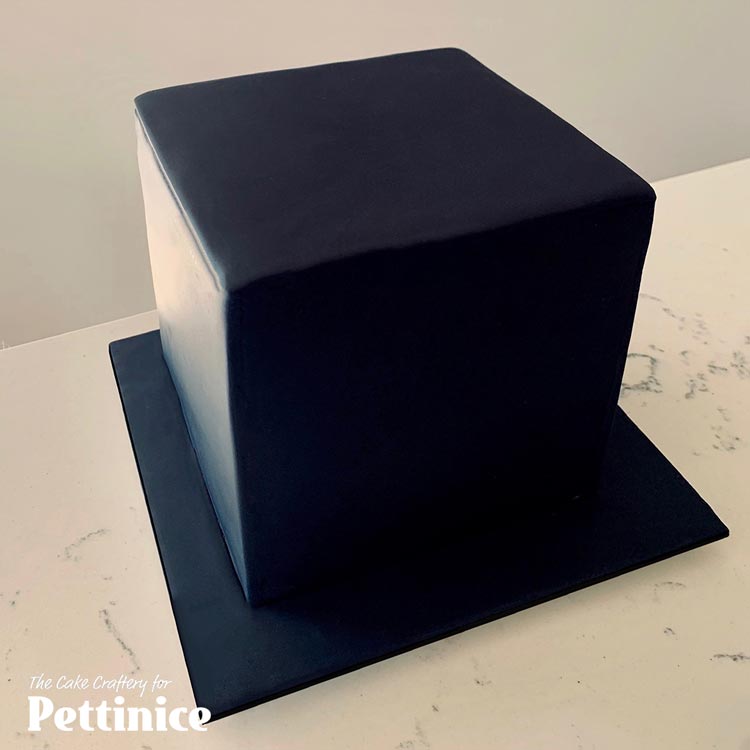
Cover your cake and board in Pettinice. I used black. This cake is a 14 cm x 14 cm x 14 cm cube.
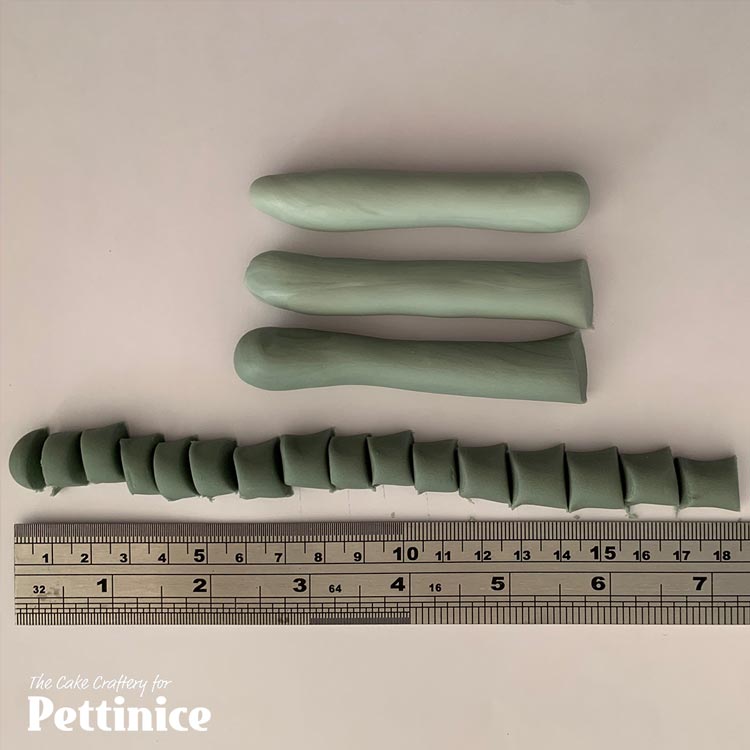
For the main leaves, cut pieces of your darker and lighter sage greens to make .75cm and 1.5cm balls. No need to measure or be consistent - variety is good. Place your pieces in a container or bag so they don’t dry out.
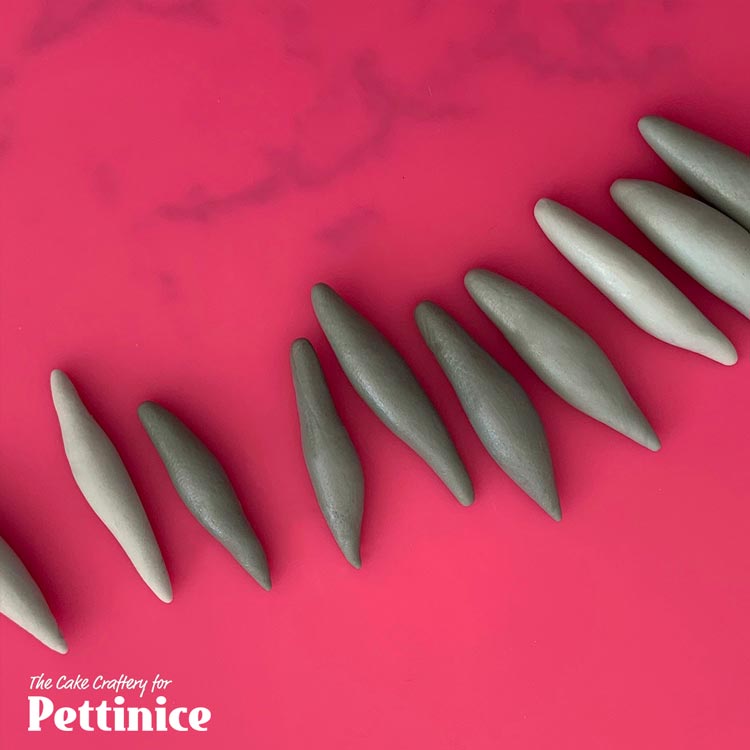
Shape your leaves as shown. Roll into sausages and taper both ends.
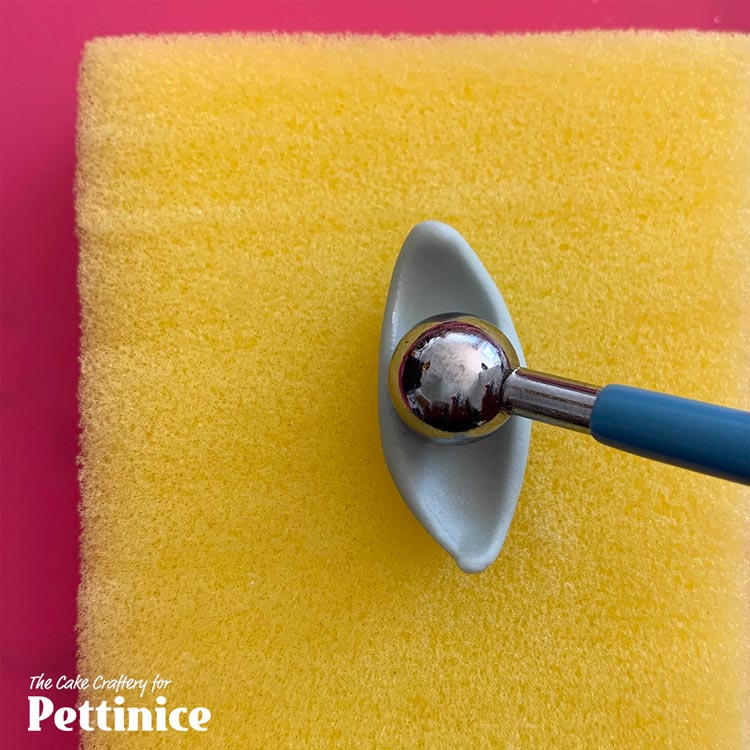
Flatten centre with a ball tool.
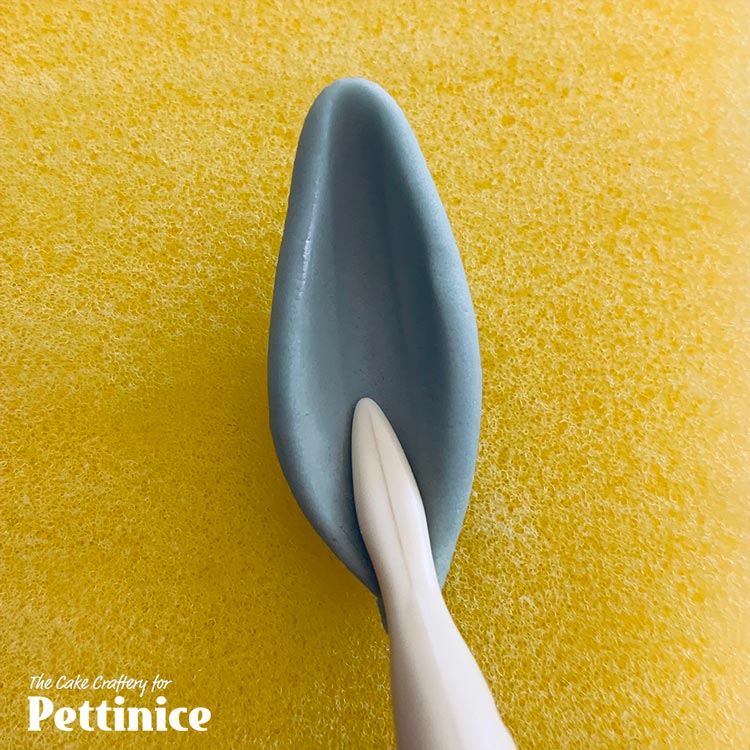
You can run a vein down the centre with your dresden tool if you like that look.
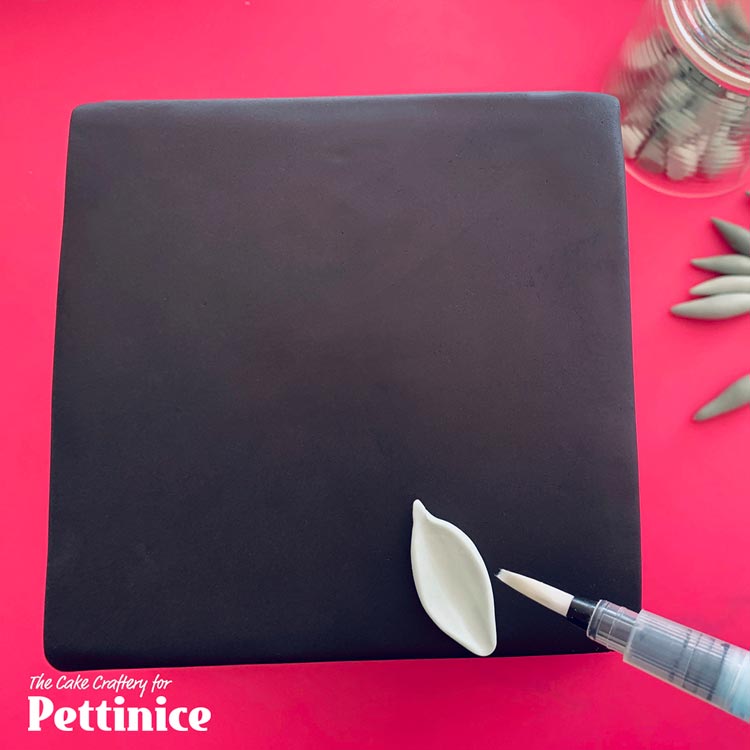
Attach your leaves the cake with a little water or edible glue.
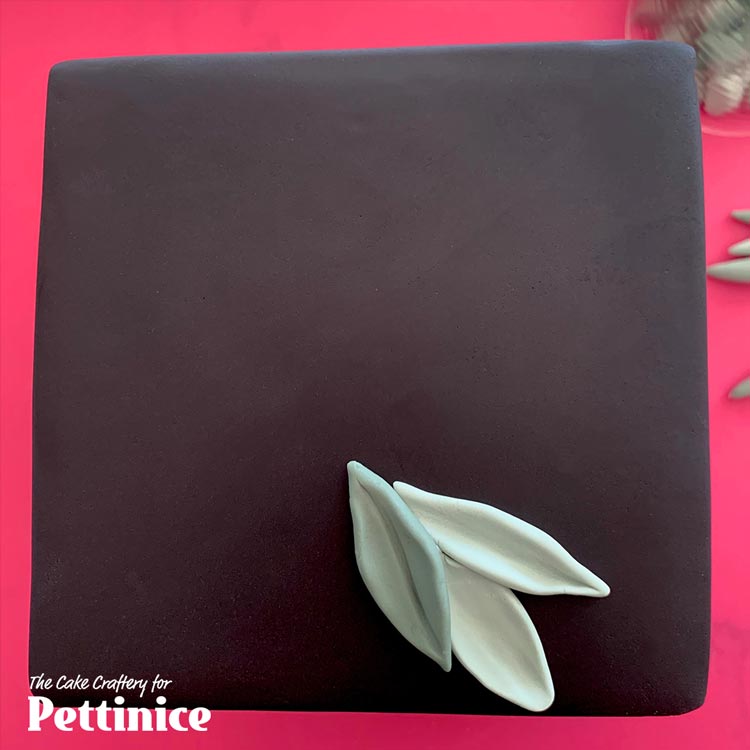
Make your first spray of leaves. I took 2 pieces each of light, medium and dark grey/green. There is no right or wrong combination.
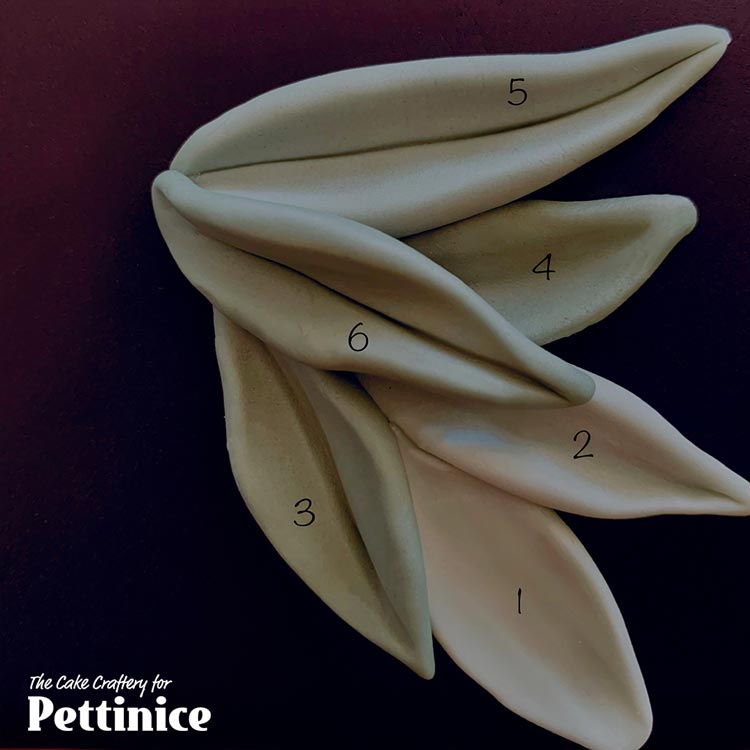
Angle your leaves as though they are coming off a central stem on the cake’s surface. Attach with edible glue or a little water. Overlap slightly, working from tip of “stem” down to where the flower is going to be placed.

Large Pink Roses
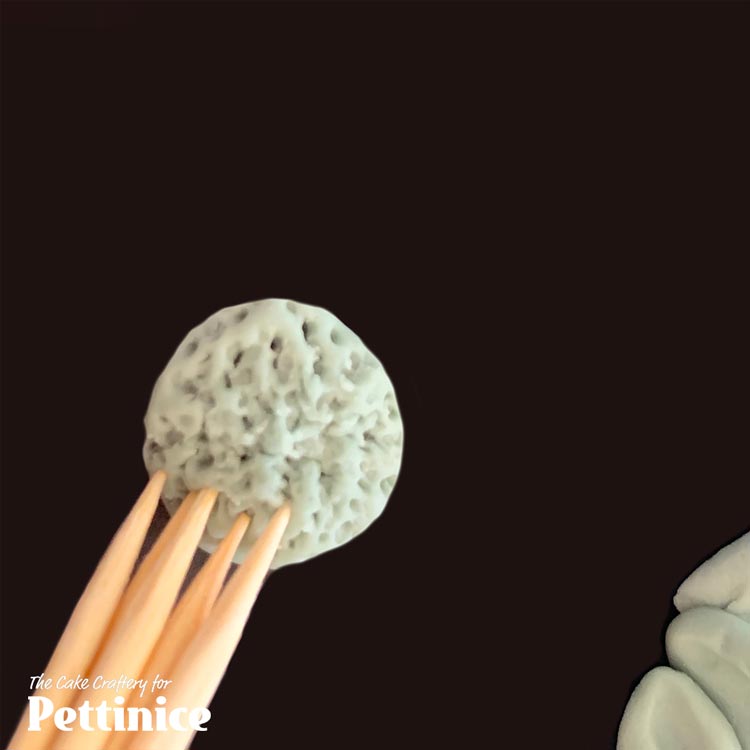
For each rose, break a pea-sized piece off one of your reserved sage green sausage shapes to make rose centre. Flatten into a circle and texture with any pointed tool you have. I tape cocktail sticks together in a bunch.
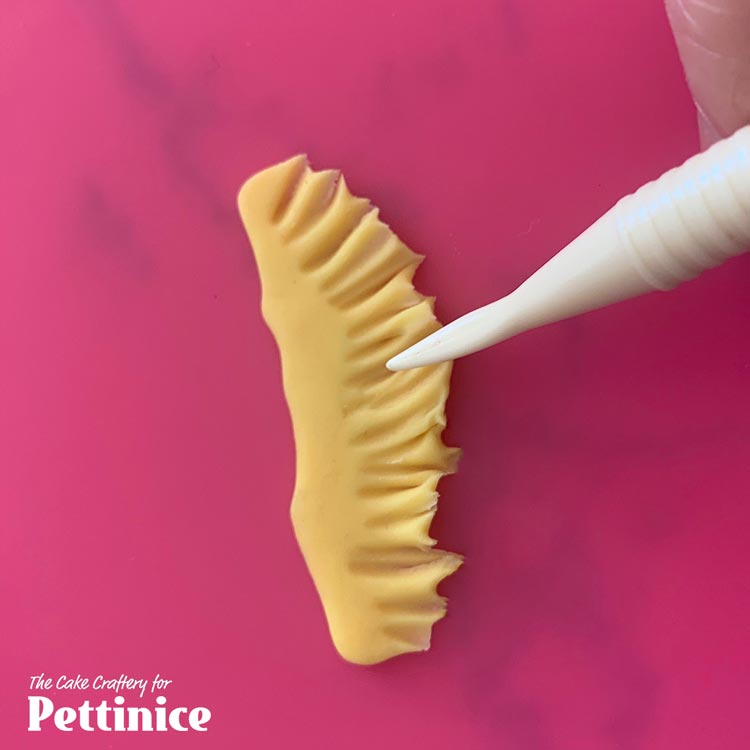
Now take a pea-size piece of your golden yellow and flatten as shown, ruffle up one edge with your Dresden tool. Wrap this around the textured green centre.
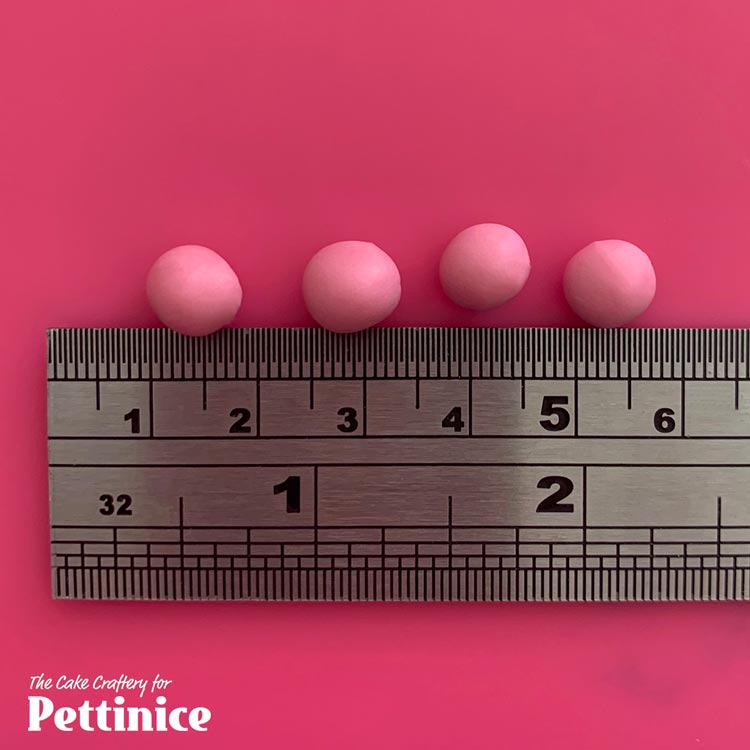
Make 4 small balls with the darkest of your 3 pinks - about 7mm.
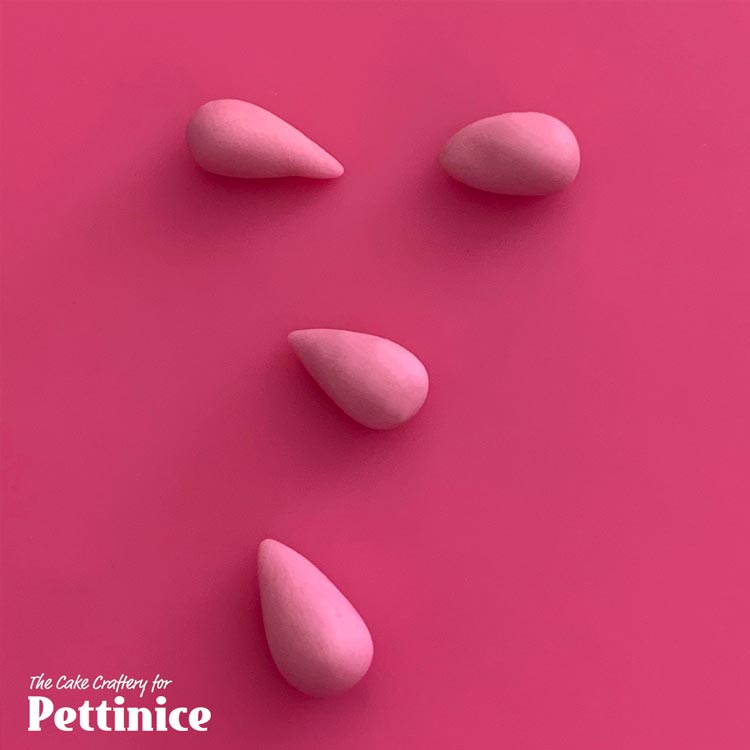
Form into teardrop shapes.
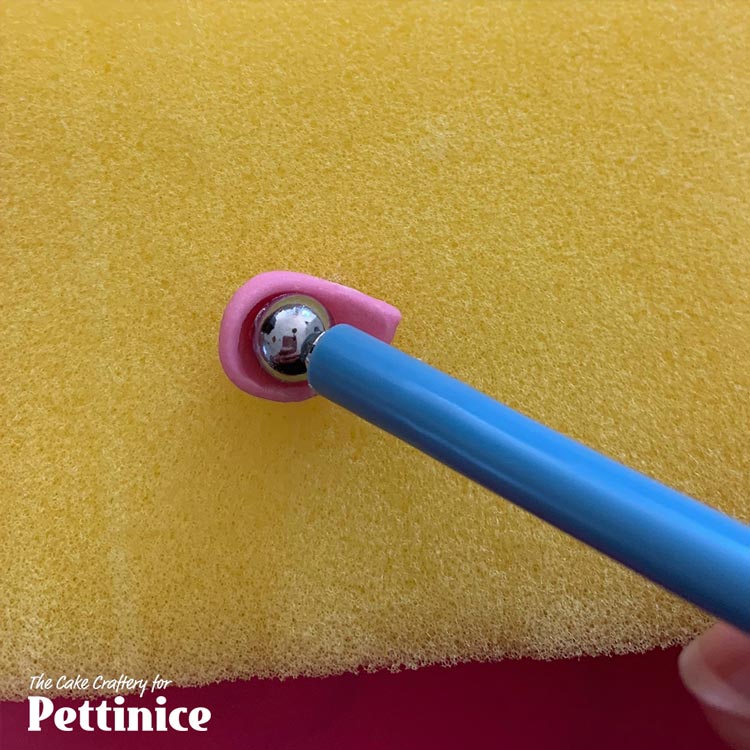
Press small ball tool into centre, supporting with your sponge or your palm.
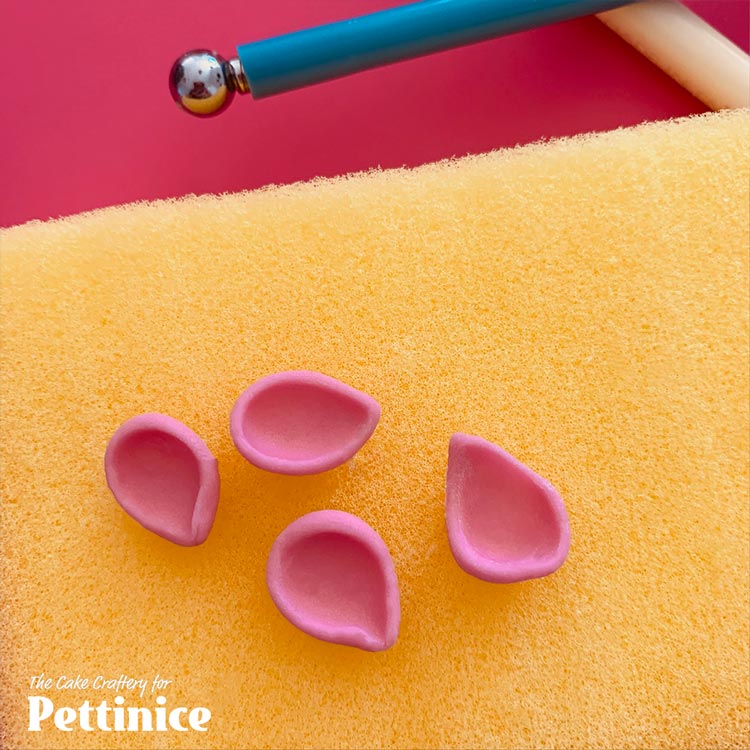
Make cupped petals. Don’t thin the edges too much.
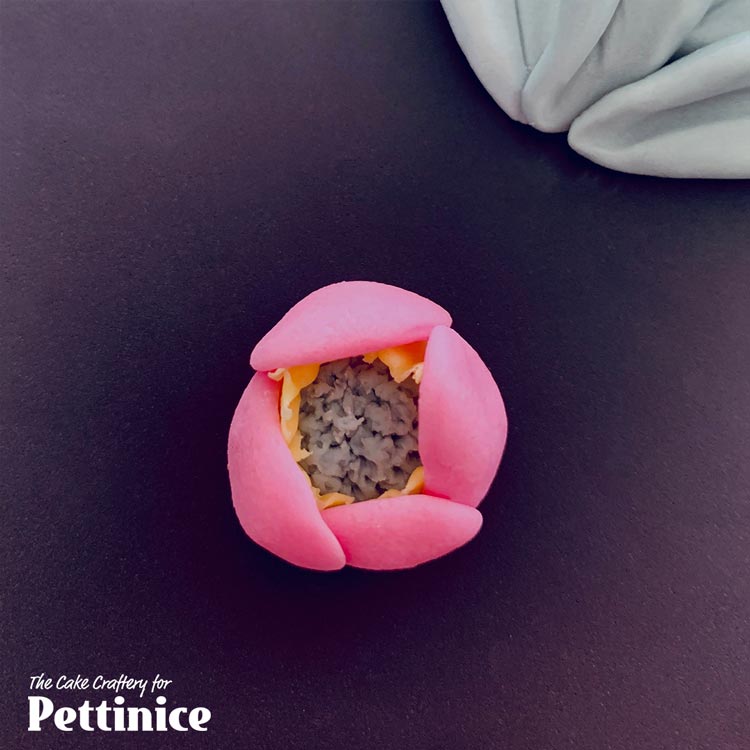
Position the petals around the flower centre and glue.
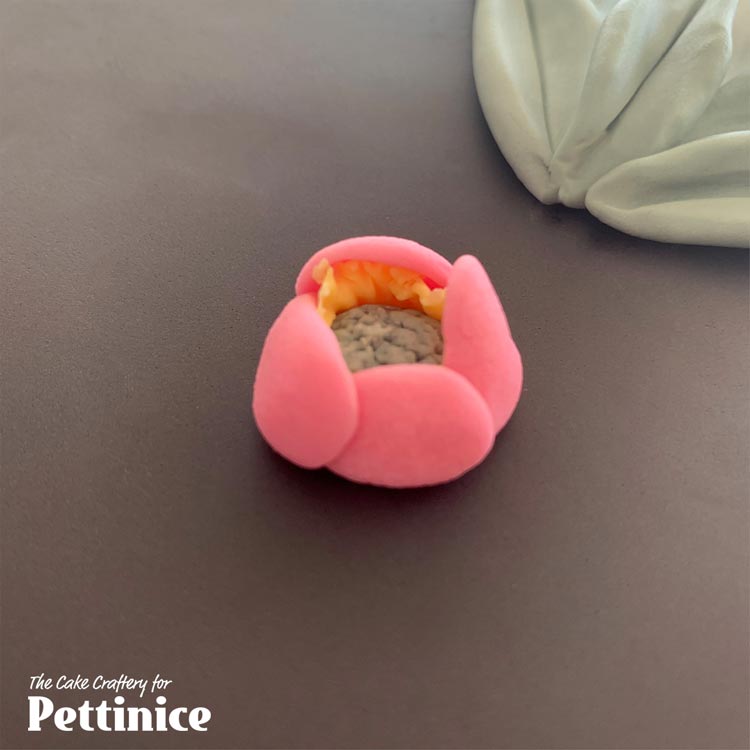
Attach to cake, or if you prefer, to a 2-3 cm disc of fondant.
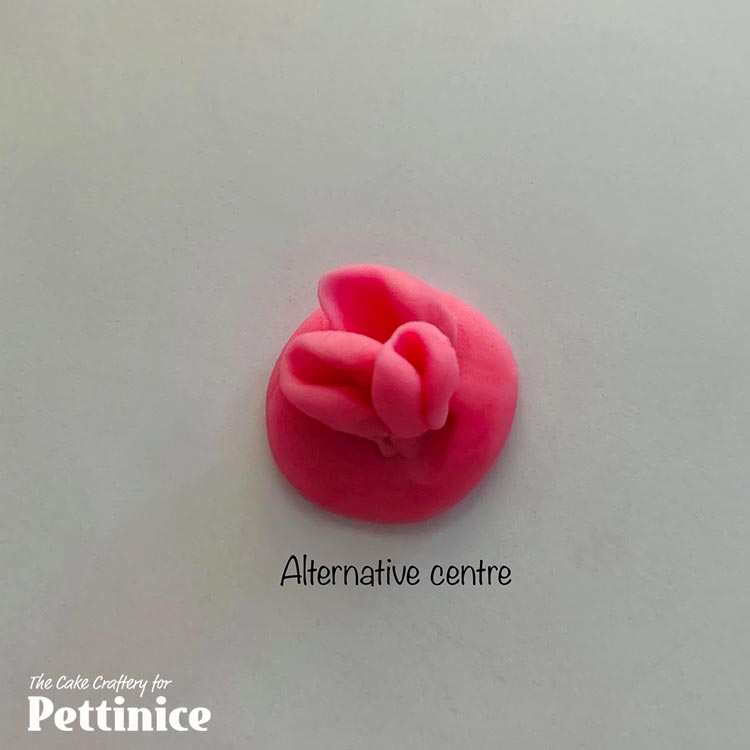
This is an alternative centre that I have used on 2 of my roses for variety. Press the centres of 3 x 4mm balls of darker pink fondant with your Dresden tool and arrange like so.
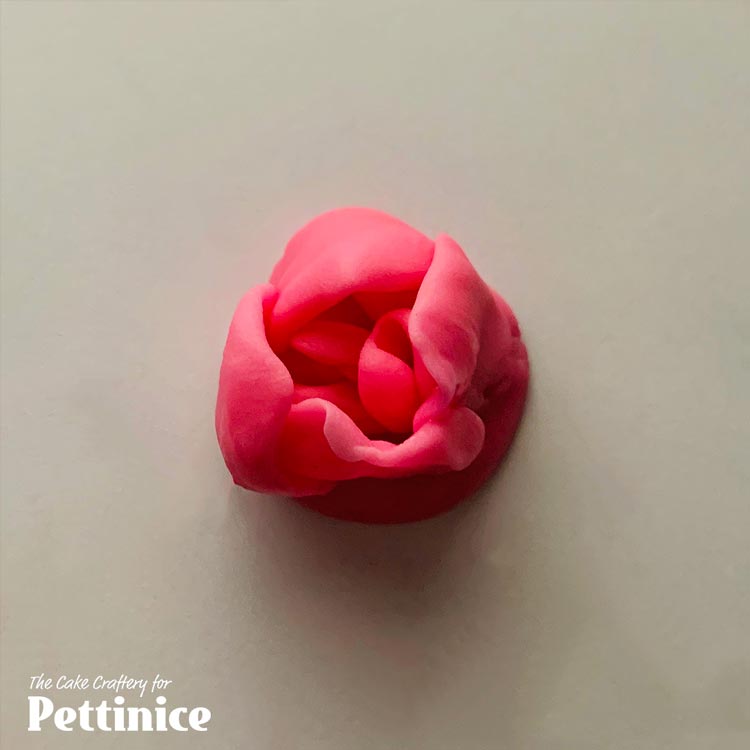
For alternative centre, add the next 4 petals as before but curling the tops randomly.
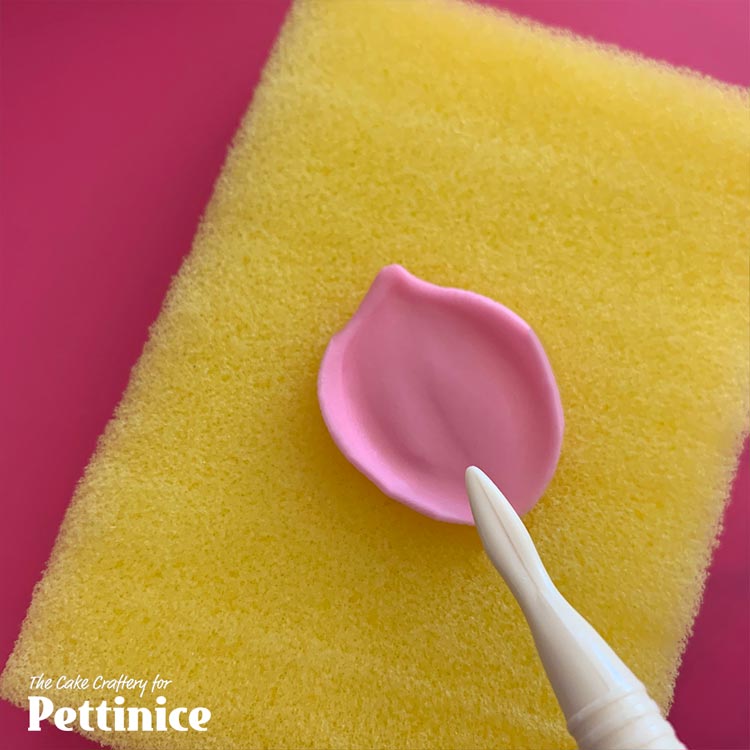
2nd row of petals. Take your mid-tint pink and form 5 marble-sized balls into teardrops and flatten the centres.
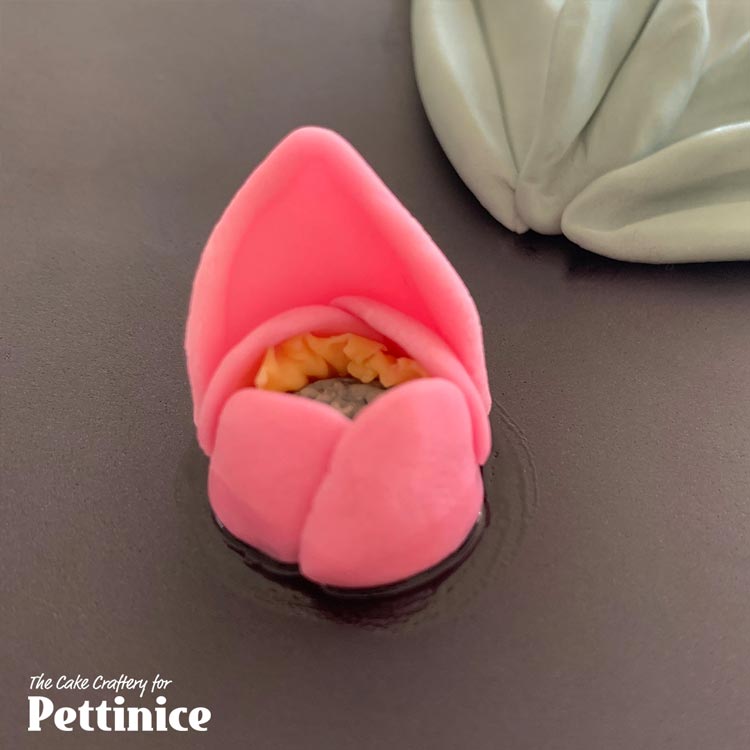
Glue upright, across width of 2 inner petals.
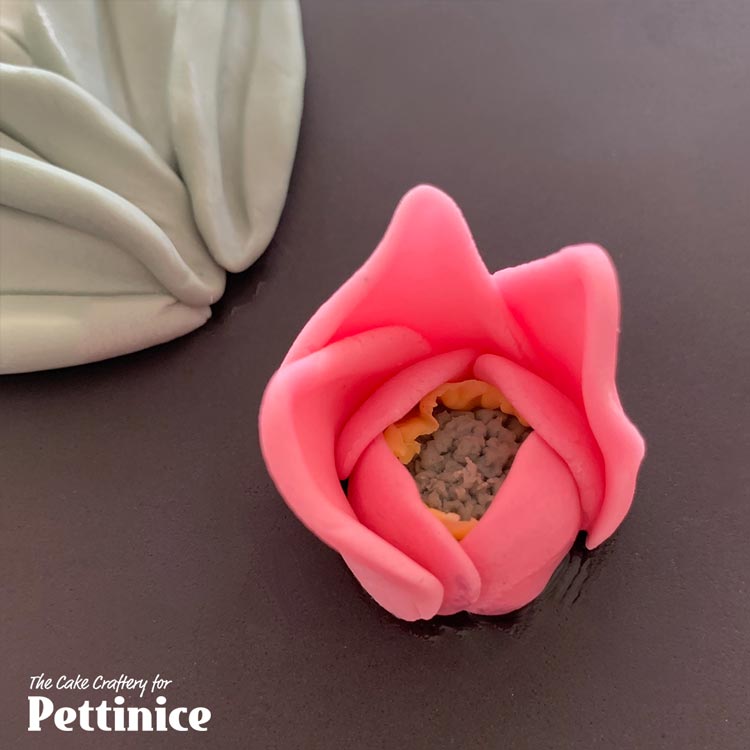
Overlap next petal and work around the rose.
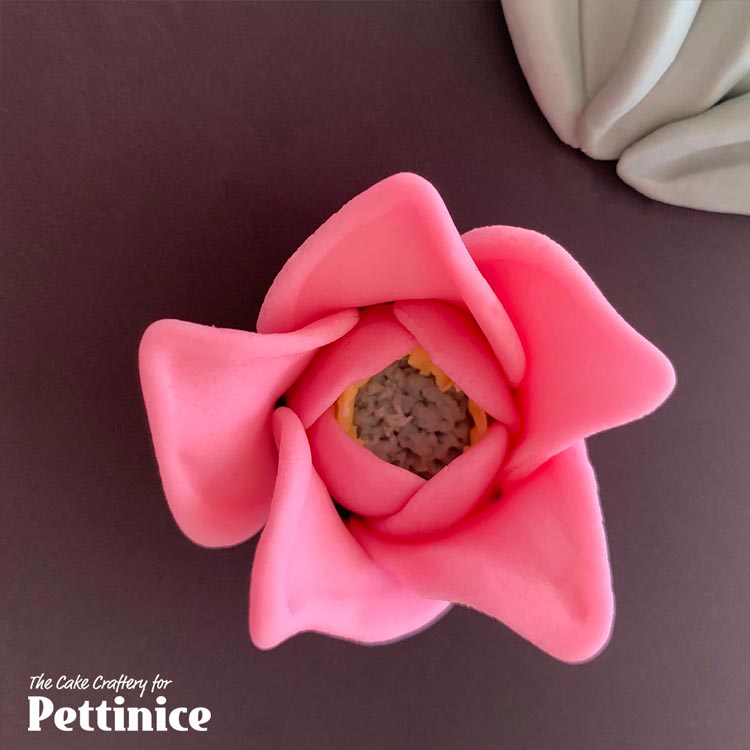
Curl back the tops to give them movement.
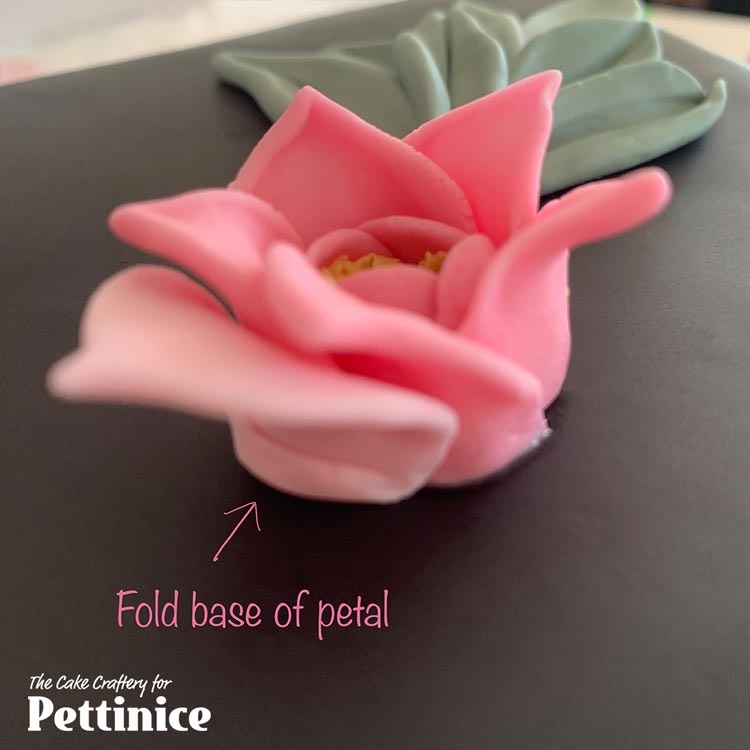
Repeat the process with 6 larger balls (around 1.8cm) of your lightest pink. Fold the base of each petal out to give it stability, glue.
You can stop here for now and later add a few more outer petals if you like, once all the flowers and leaves are arranged on the cake.
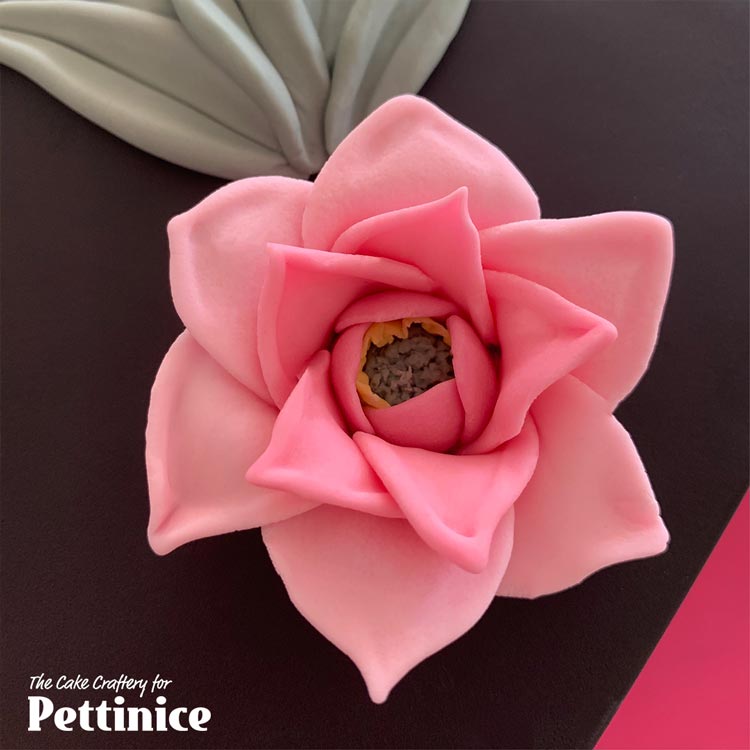

Burgundy Dahlias
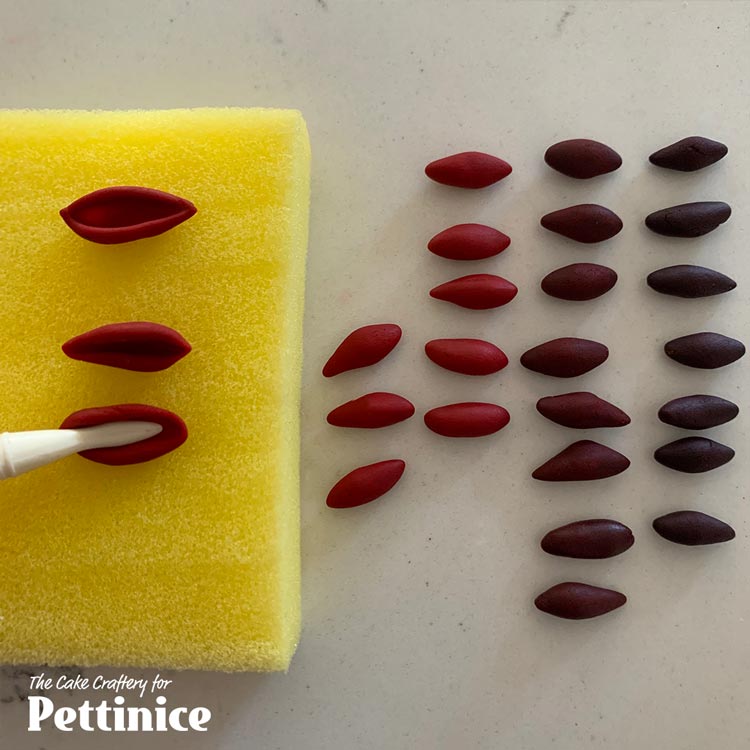
These petals are approx. 1g each. Make 11 light, 8 medium and 7 dark burgundy for each flower. Flatten centres and elongate with dresden tool like the leaves, only smaller.
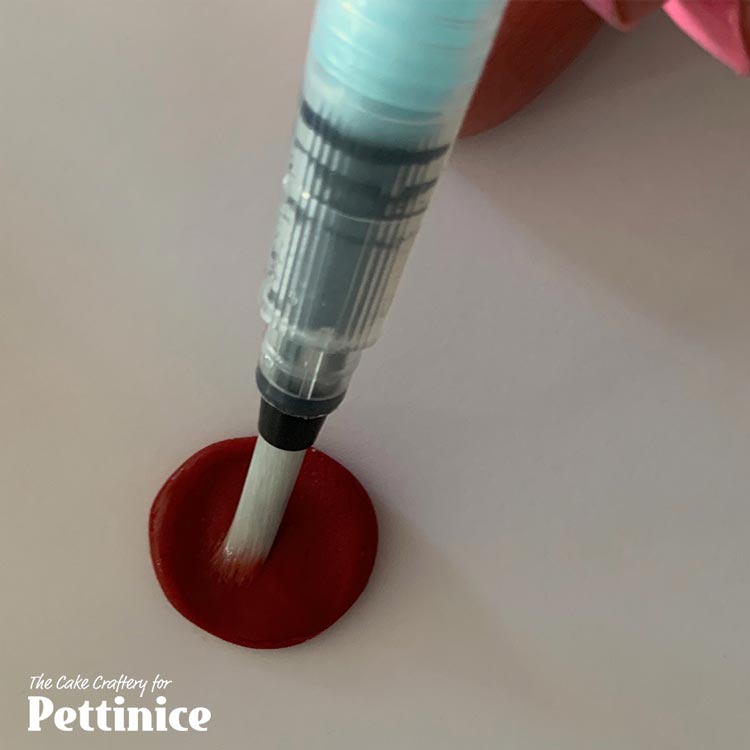
If forming on a disk of fondant, use black or extra burgundy. Dab with water or glue.
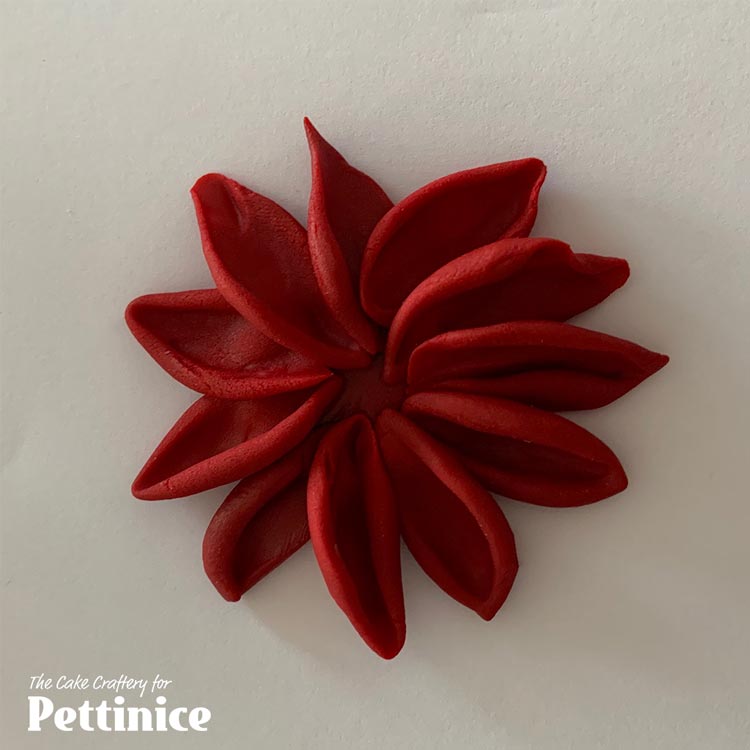
Arrange 11 lightest petals like this.
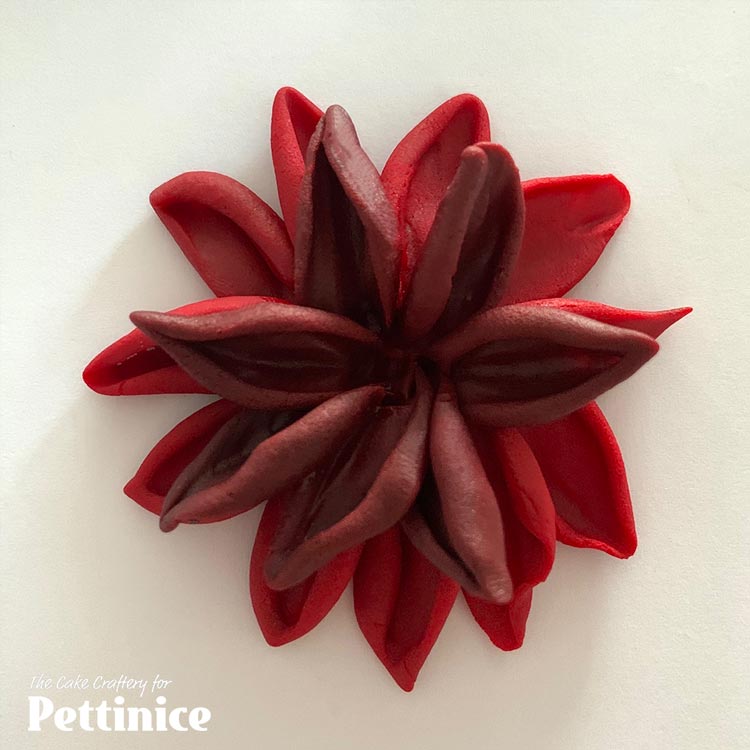
Arrange 7-8 of the medium burgundy petals on top and closer in to the centre.
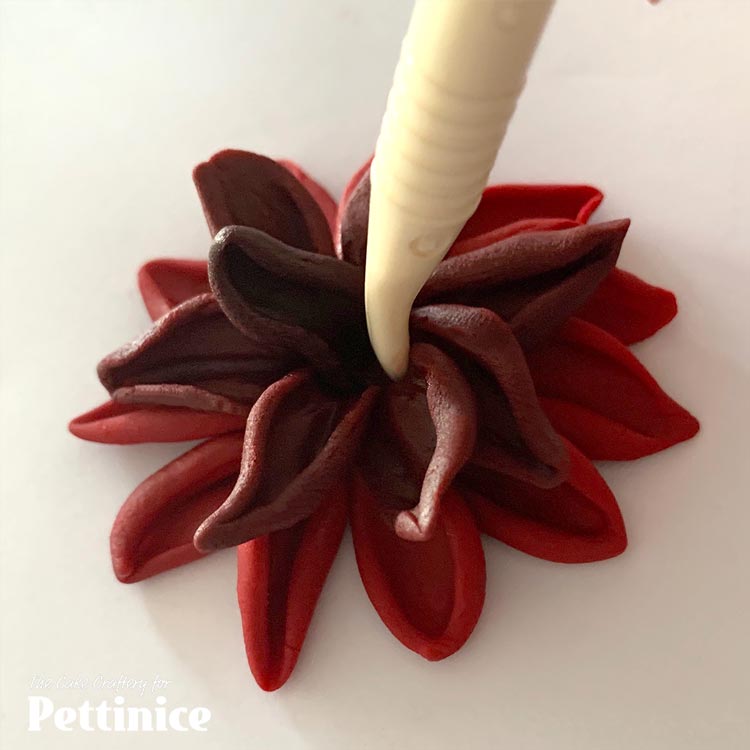
Now press the darkest petals into the centre with Dresden tool in a more upright position.
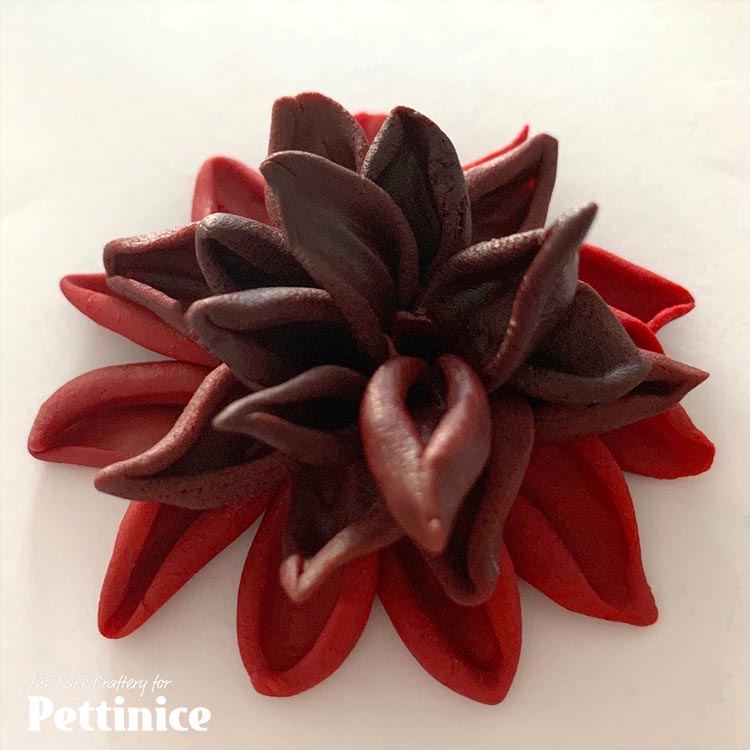
Add the last of the darkest petals right into the centre, as upright as possible.

Purple hanging flowers
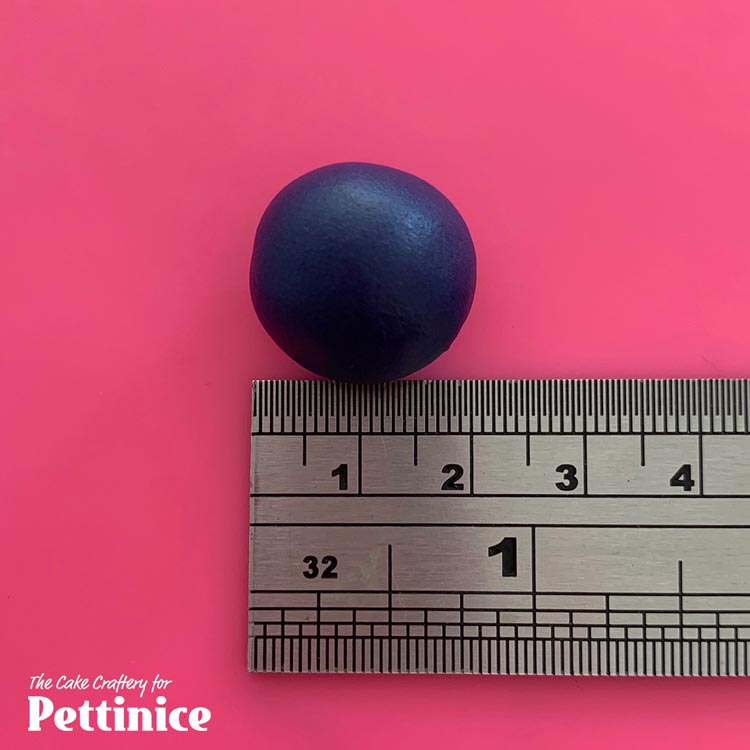
Take a 2cm ball of deep royal blue.
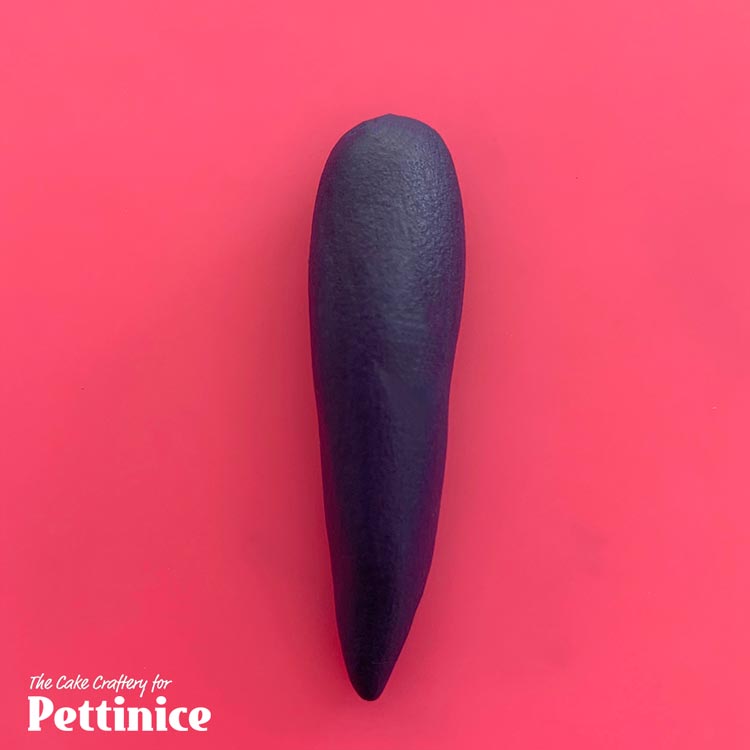
Form a large, elongated teardrop.
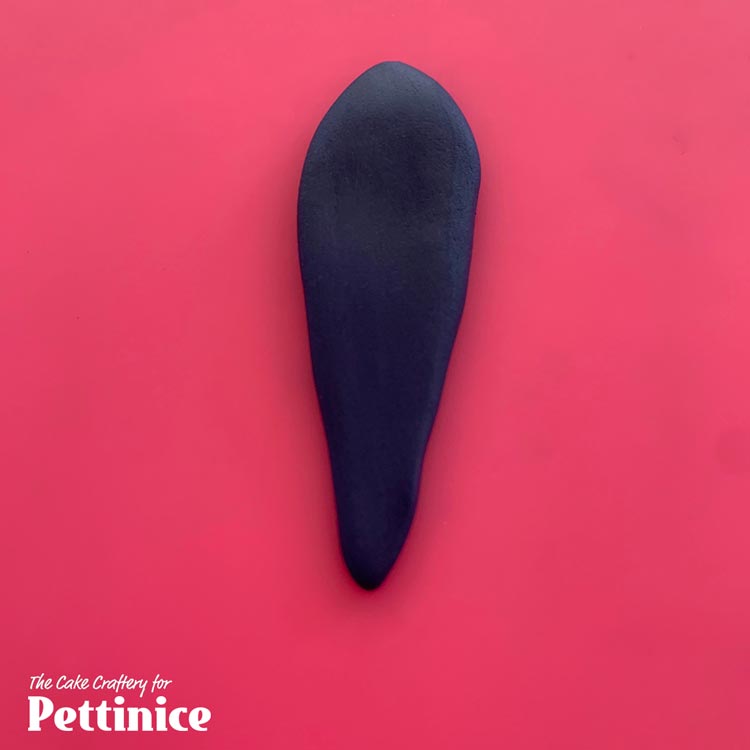
Press teardrop so underside sits flat.
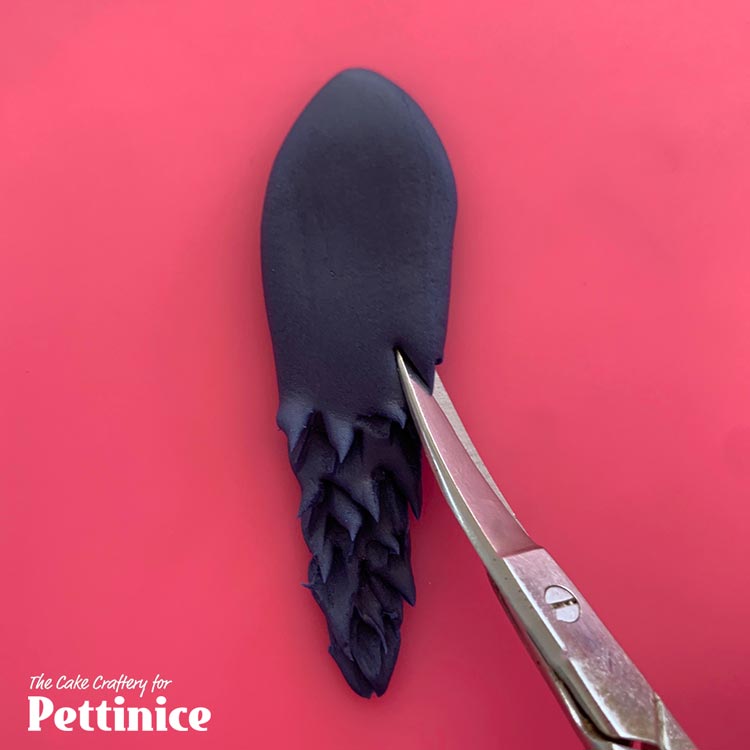
Take your small scissors (I use curved nail scissors that have only ever been used for cake work), start at the tip and make little staggered V-shaped snips all over.
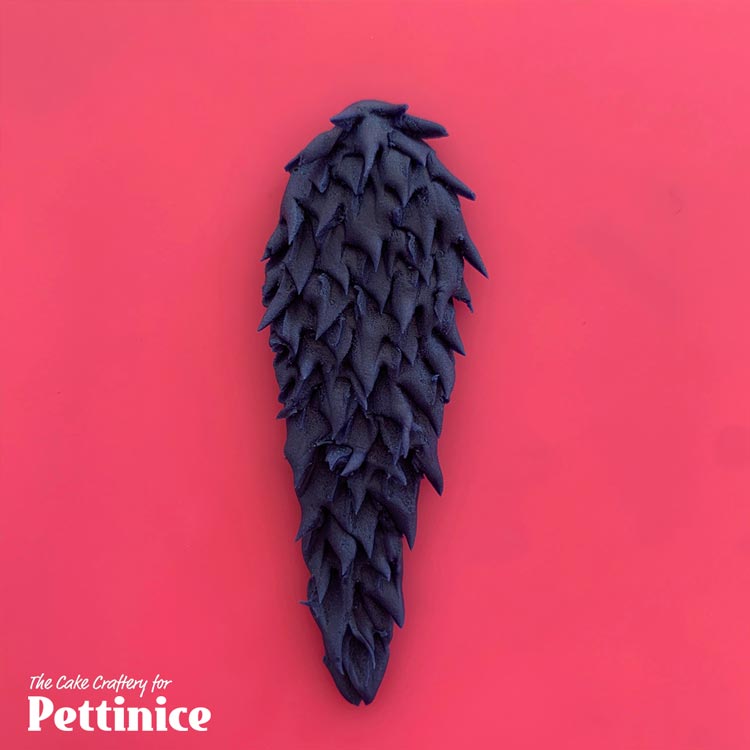
Make more v-shaped snips in any gaps you see and up each edge.
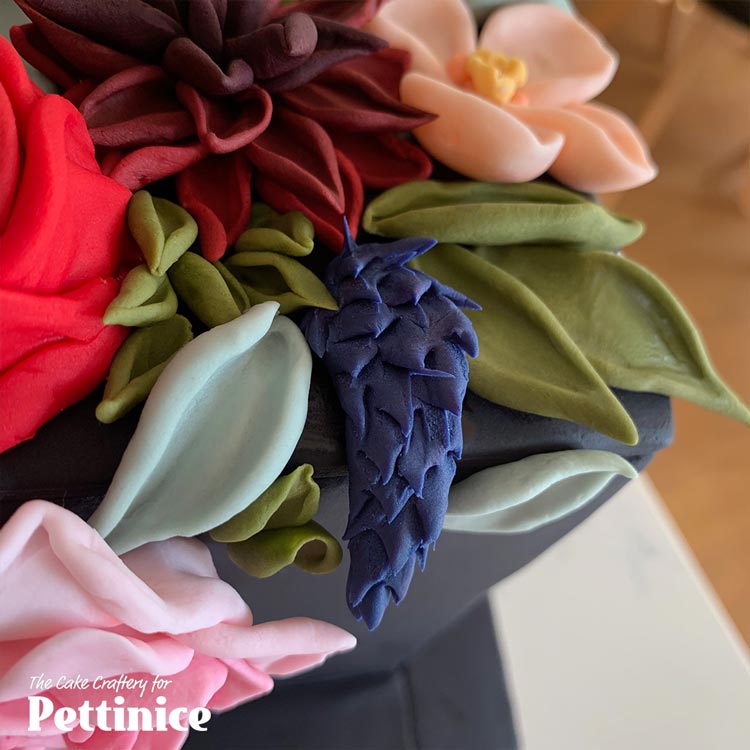
Use as filler flowers. I used 3 or 4 on each side and top of the cake.

Pale peach 4-petal flowers
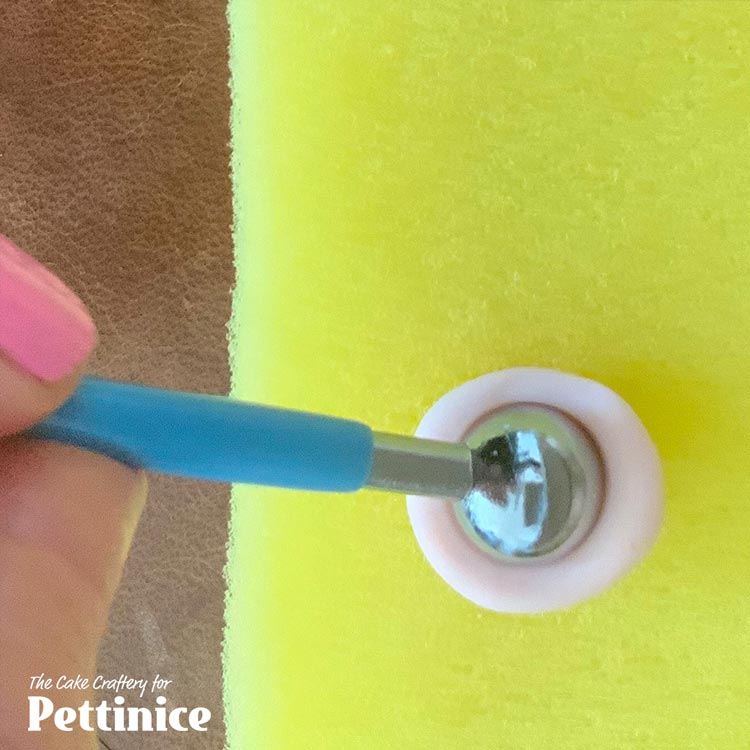
Take 4 x 1.5cm balls of your palest peach colour per flower, and flatten into rounds. Press large ball tool into the centre to make a cup shape.
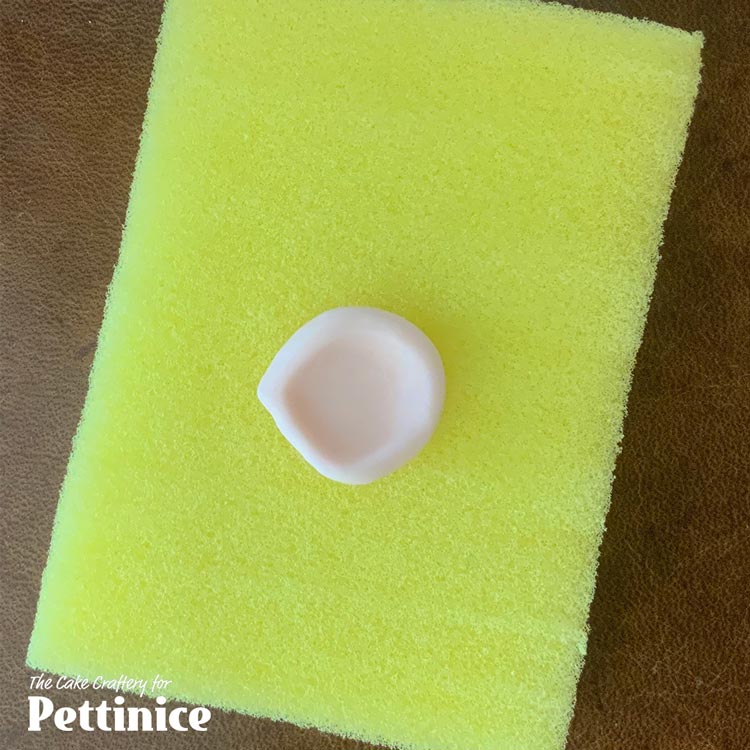
Gently flatten the cup shape a little.
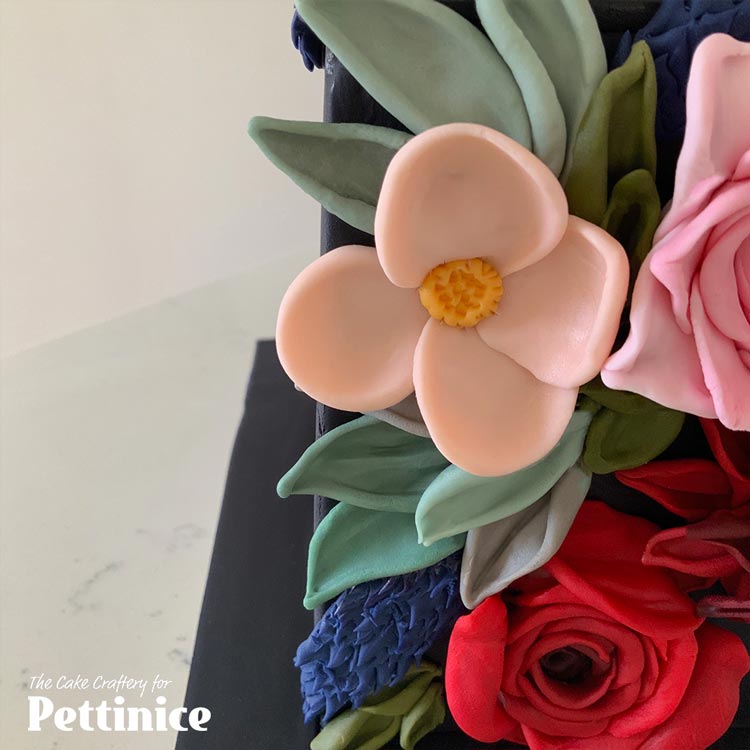
Arrange petals in groups of 4, overlapping slightly, and add yellow centres, texturing as shown.

Peach star-shaped double layer flowers
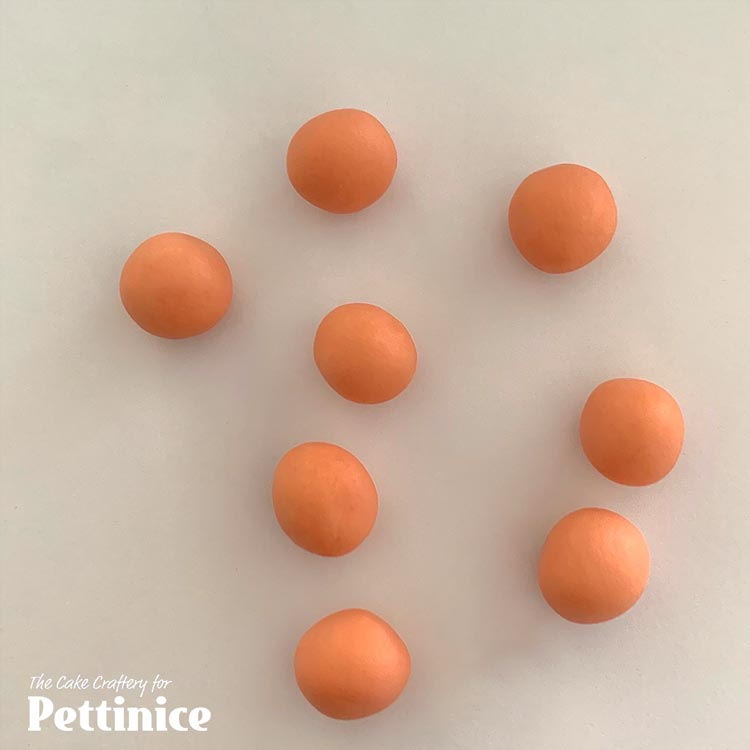
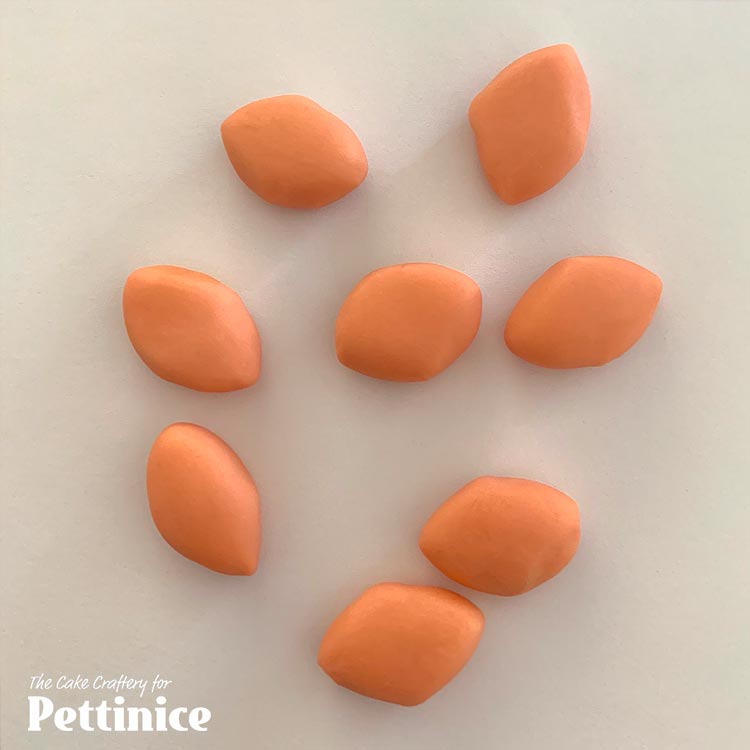
Shape like the sage green leaves but make smaller and thicker.
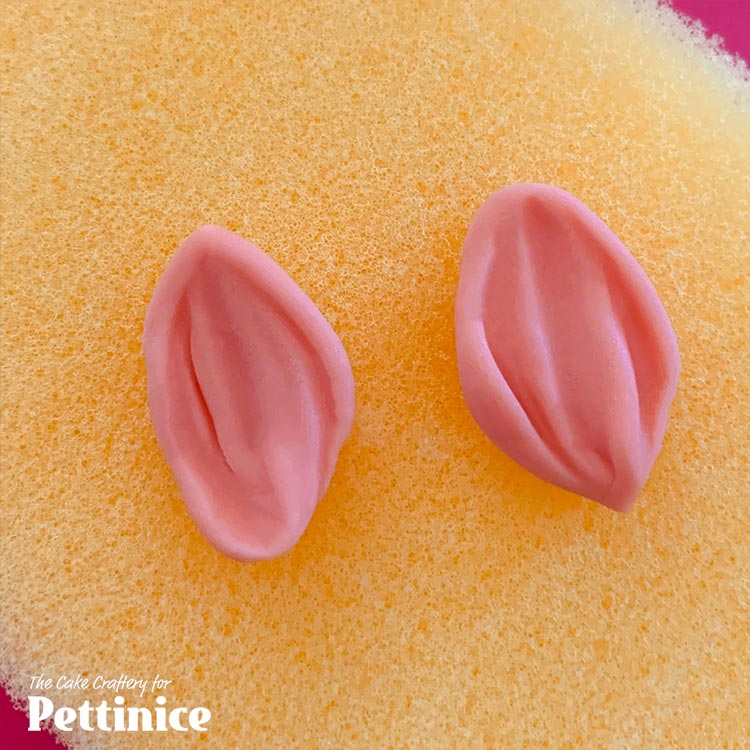
Form several folds or veins in each petal with the dresden tool.
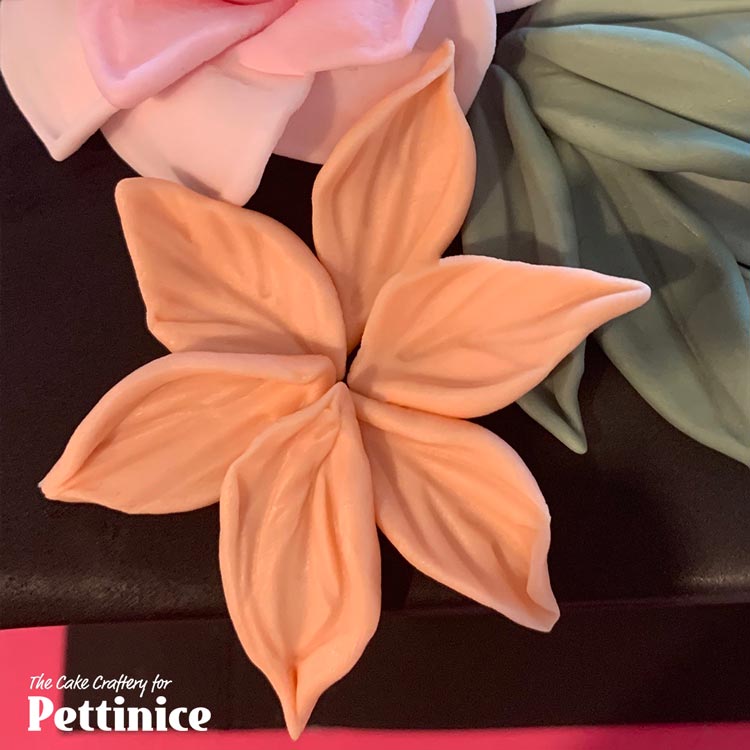
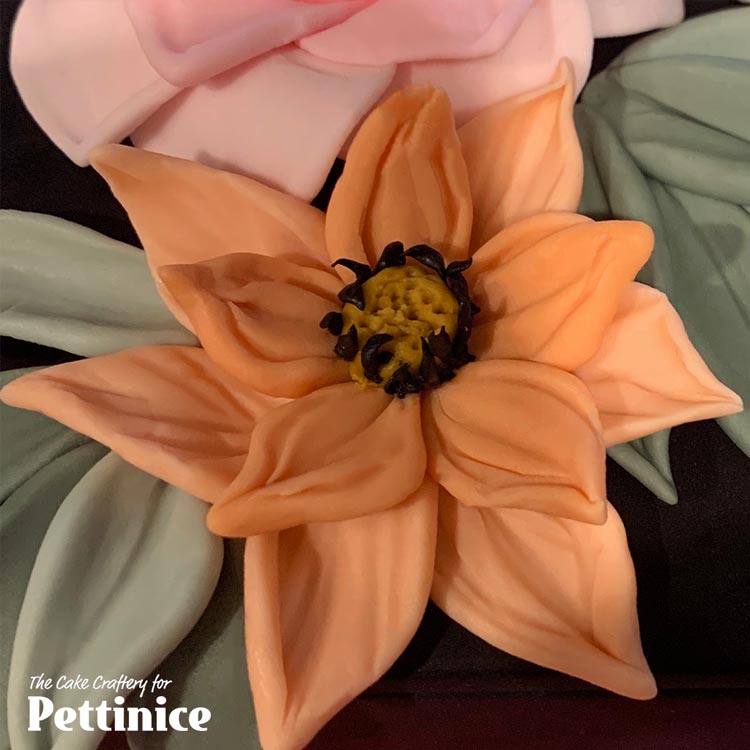
For the inner star, do the same with 1.5 g darker peach balls. Make yellow centres (or use off-cuts of any colour) as before and add tiny rolled pieces of black as shown, if you like more detail.

Smaller red roses
These roses have round edged petals, unlike the more triangular petals of the pink roses, for variety.
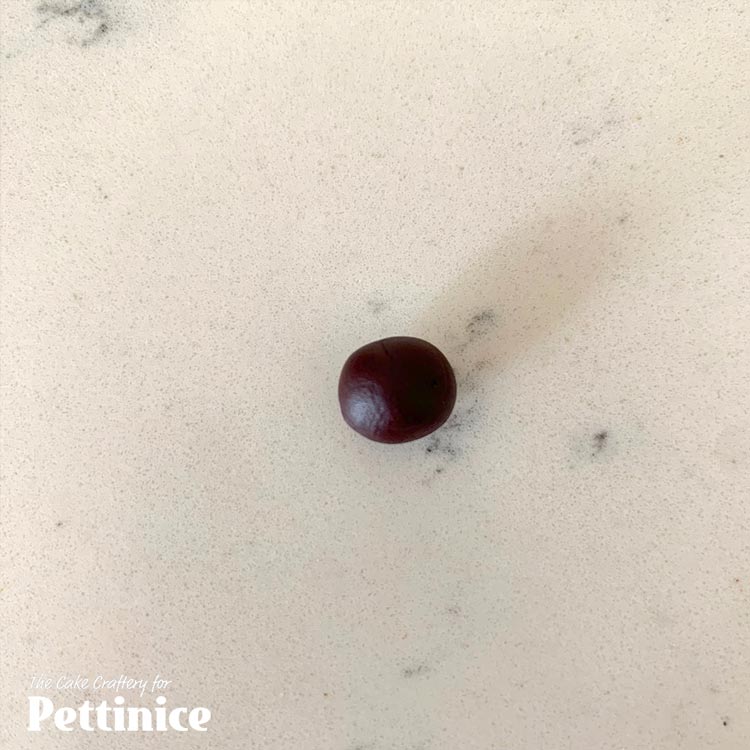
Start with a pea-sized balls of burgundy left over from the dahlias, for the rose centre.
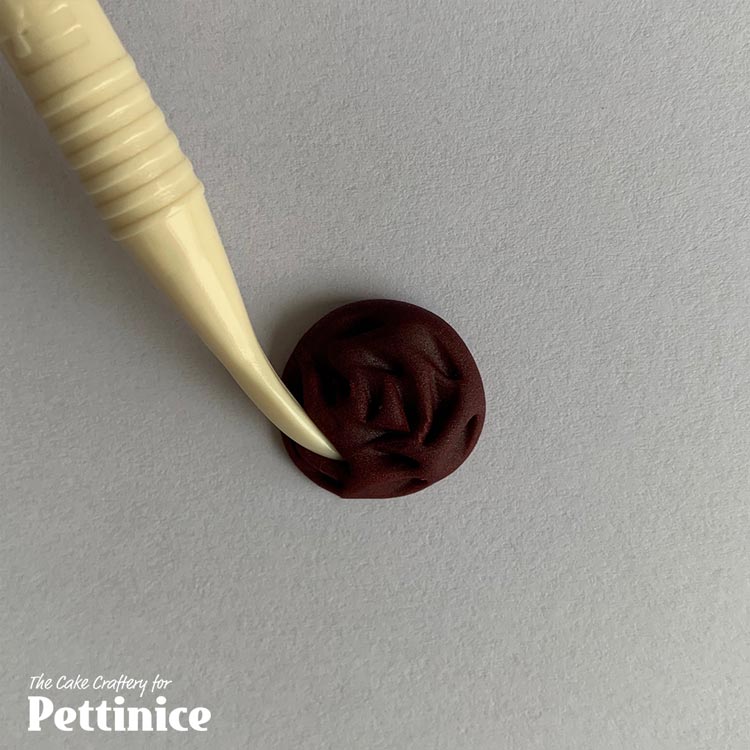
Make random ‘folds’ by pressing side of Dresden tool into the centre. Place on the cake or your work surface.
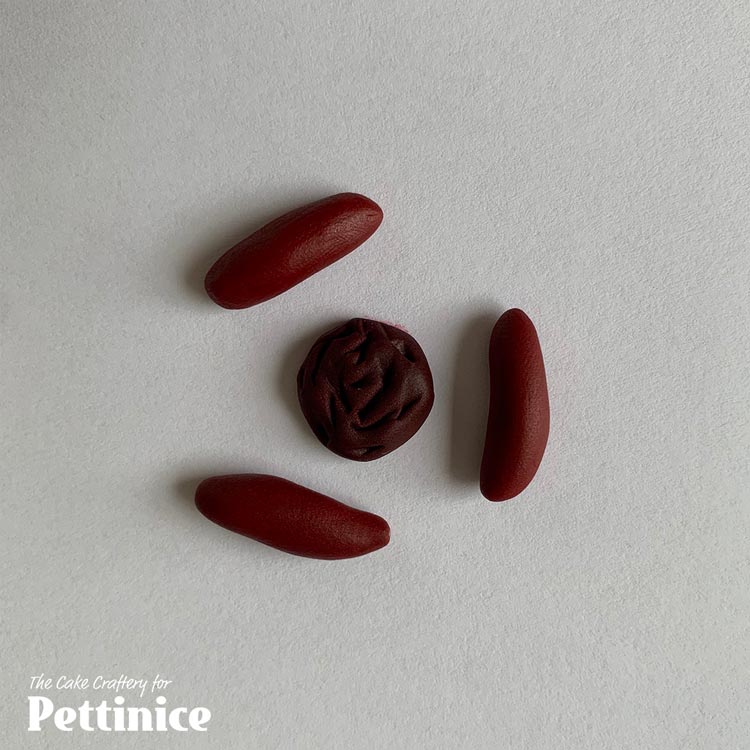
Make 3 x 1cm (0.5g/pea-sized) sausage shapes out of dark ruby red.
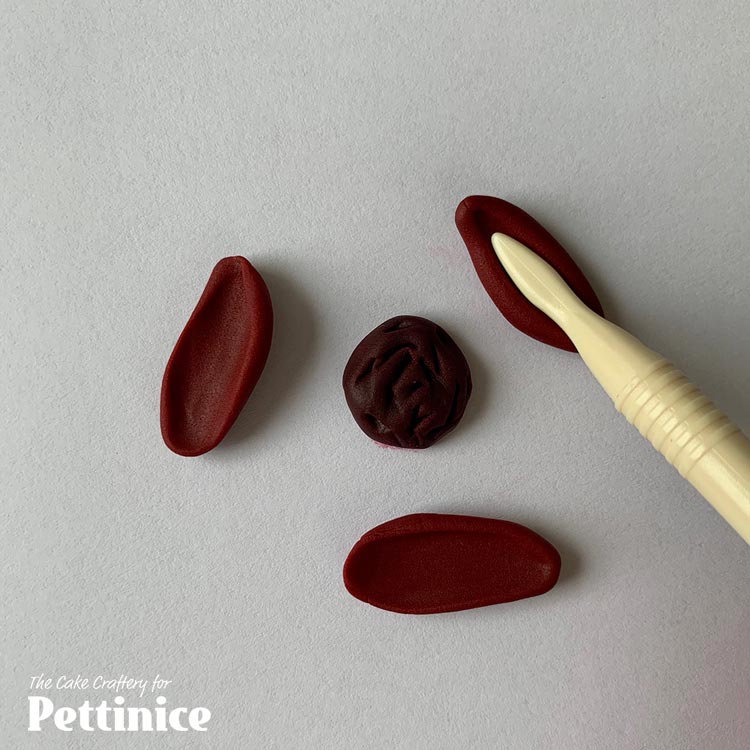
Run dresden tool along the length so that the edges curve upward around the end of tool.
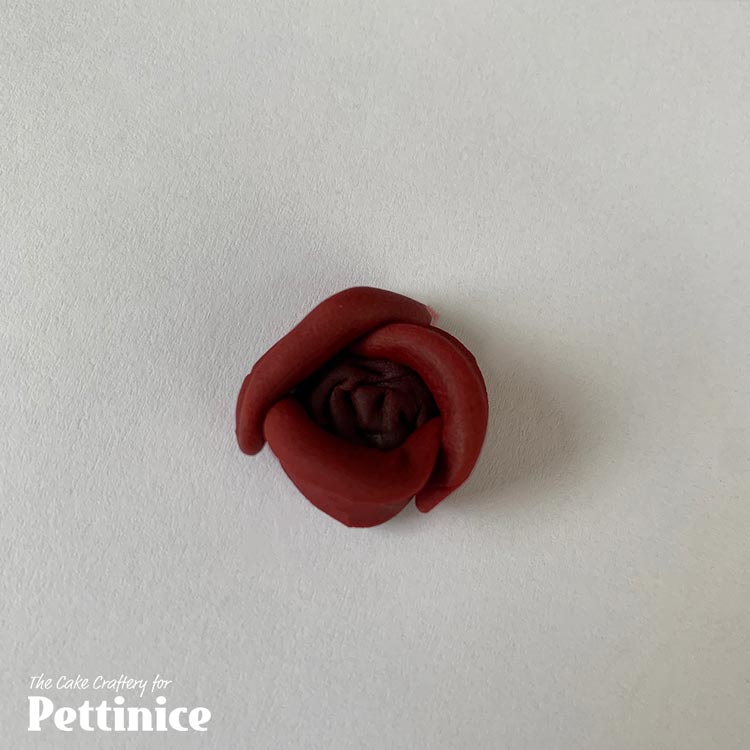
Wrap these around the centre, overlapping. Glue.
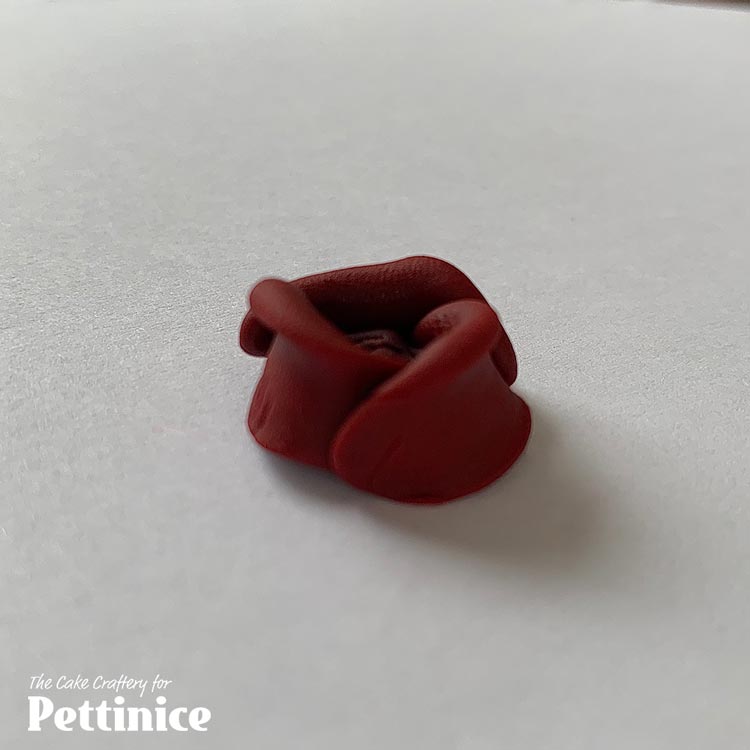
The curve of the petals is facing outward.
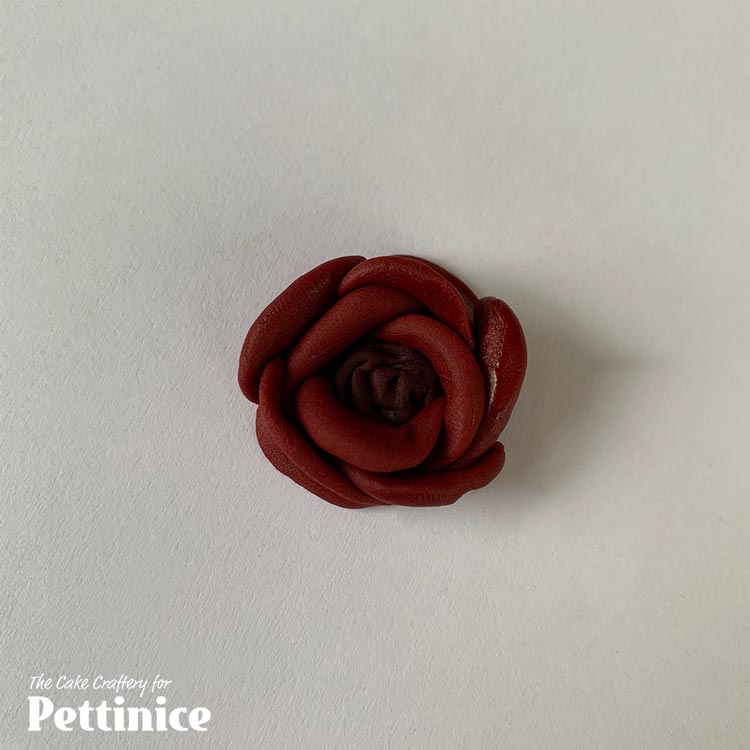
Top view.
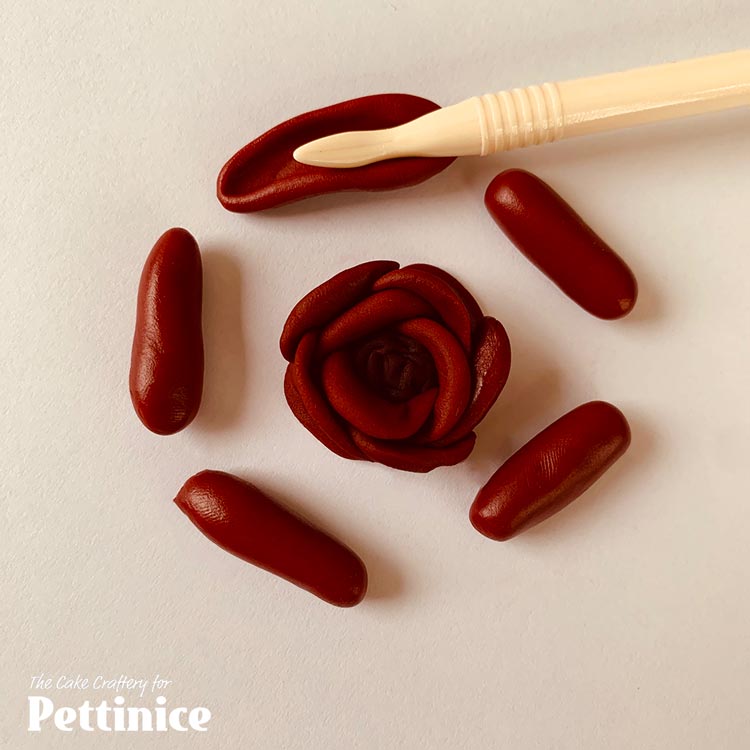
With same dark ruby red, repeat with 5 x 1cm (0.5g/pea-sized) sausage shapes. Wrap these around the 1st row of 3 petals, overlapping each other again.
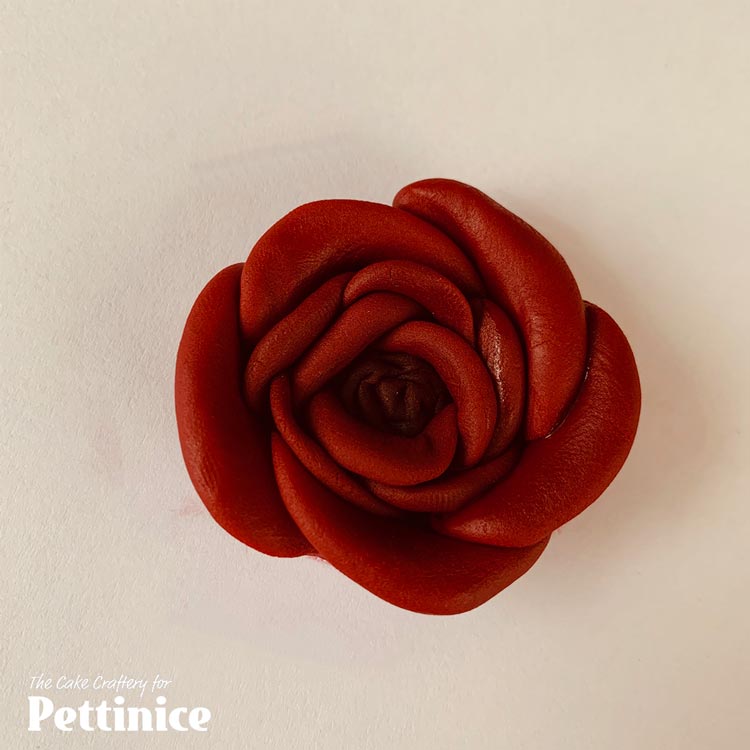
Repeat the process with 5 x 1.5 cm sausages out of the mid ruby red (1.8g/marble sized) Continue wrapping around to make the 3rd layer of petals.
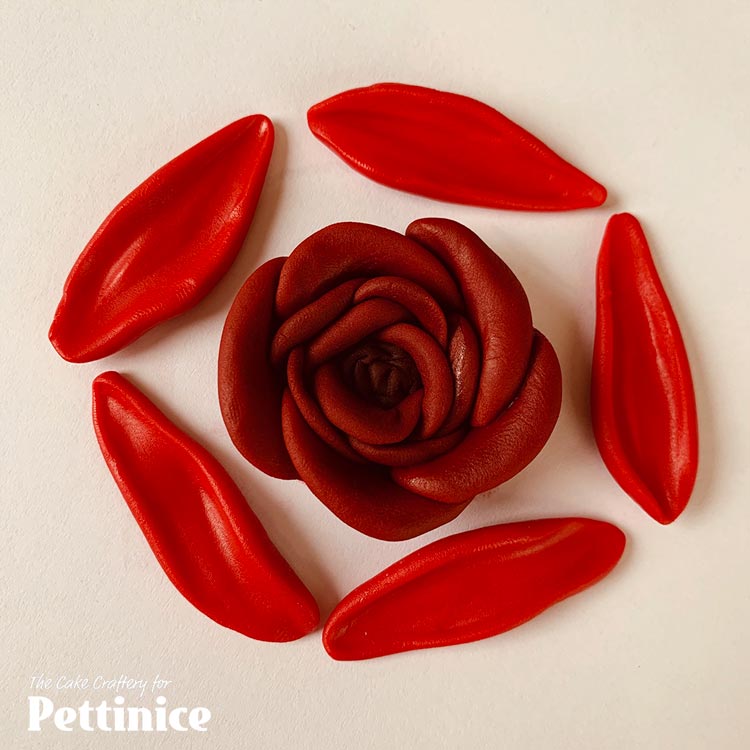
Repeat again with 5 x 2cm (2g) sausages of Red Pettinice for the outer layer of petals. These are quite a bit longer.
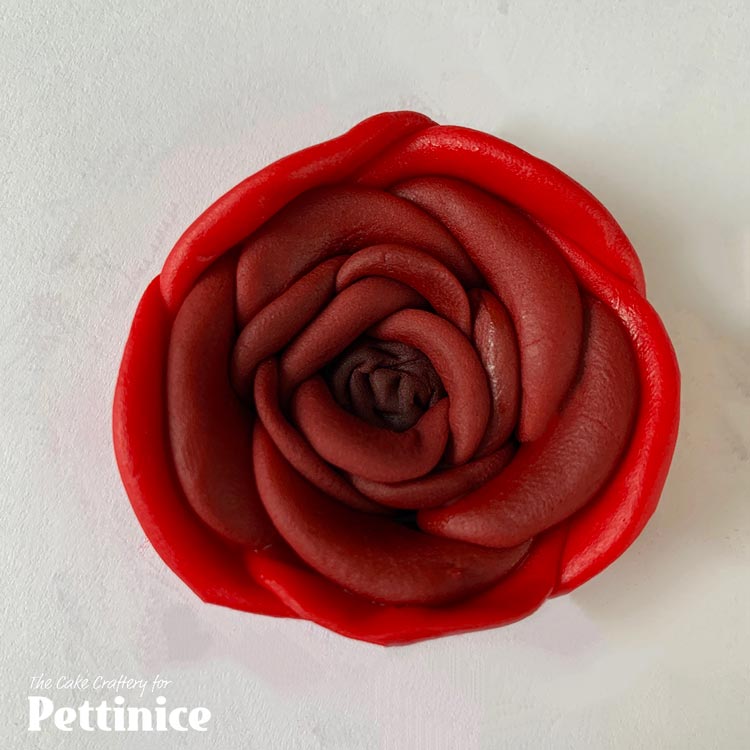
You can leave as is...
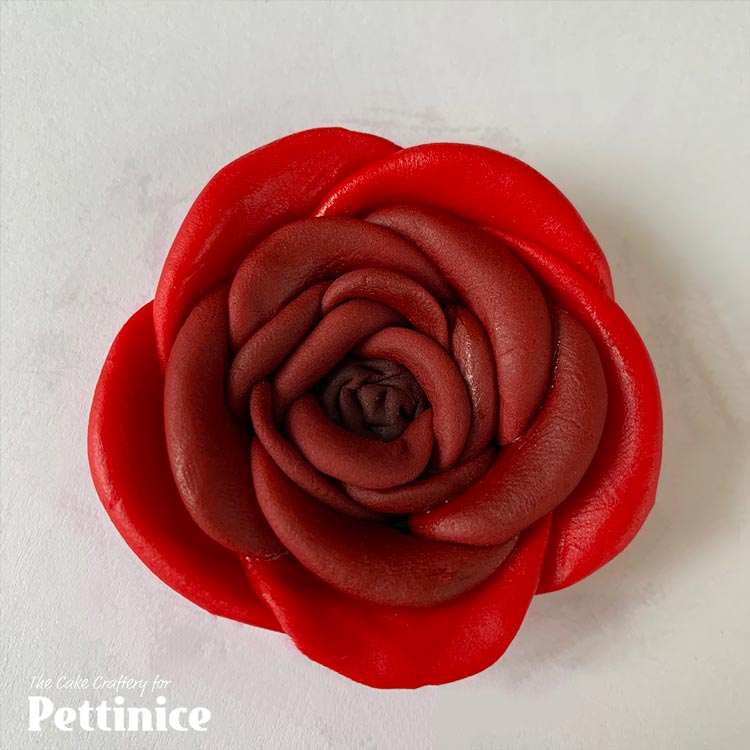
...or curl this row out, as preferred.
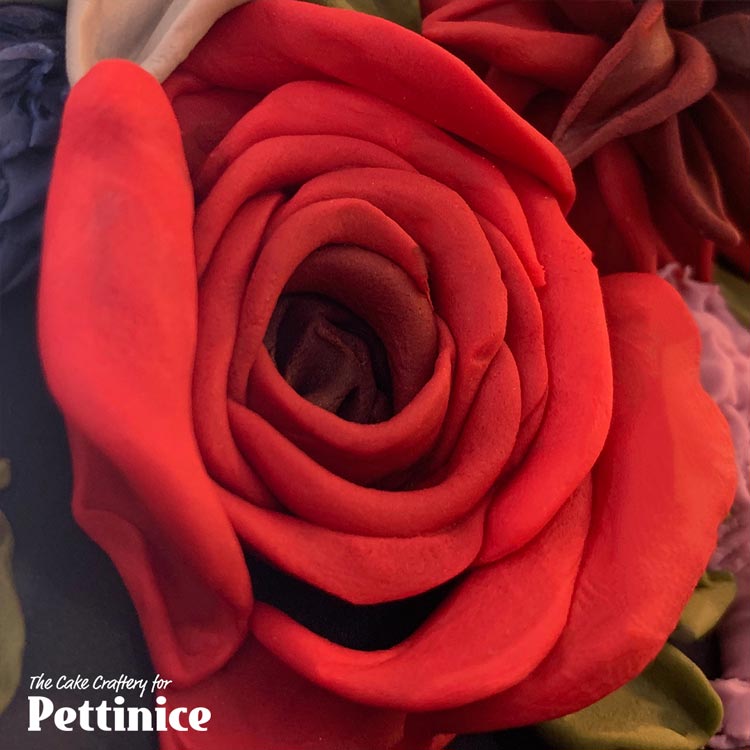
Once on the cake, you can choose to add a few more outer petals, unfurling, for a little movement
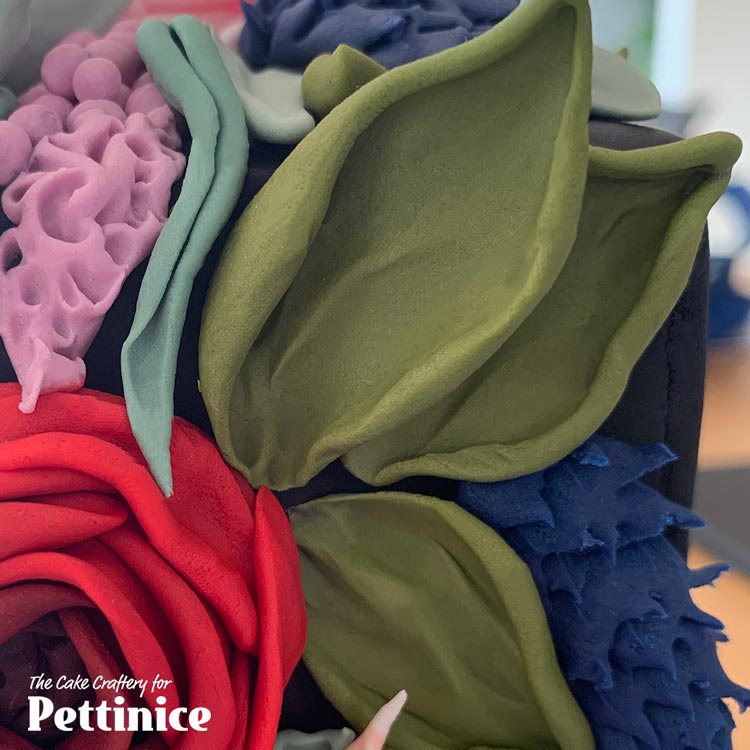
Make a few leaves out of the ‘dinosaur green’ in the same size as the sage green leaves to fill any large spaces that don’t have flowers.

Filler leaves, berry bunches or lilac sprigs
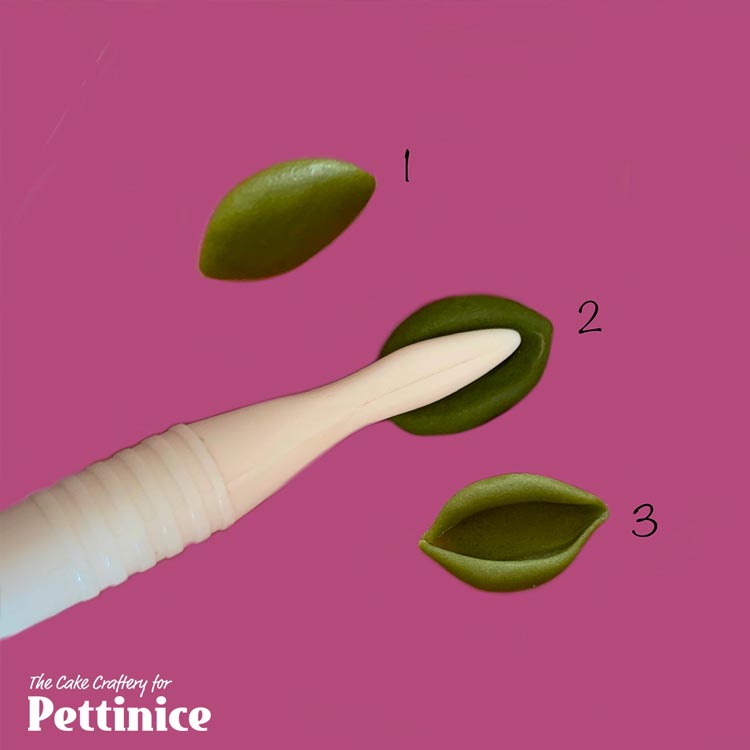
Use the rest of the ‘dinosaur green’ to make small filler leaves that you can place in clusters in the gaps between flowers. Leave as much or as little of the black fondant showing through. I preferred to fill as most of the gaps with leaves for this cake.
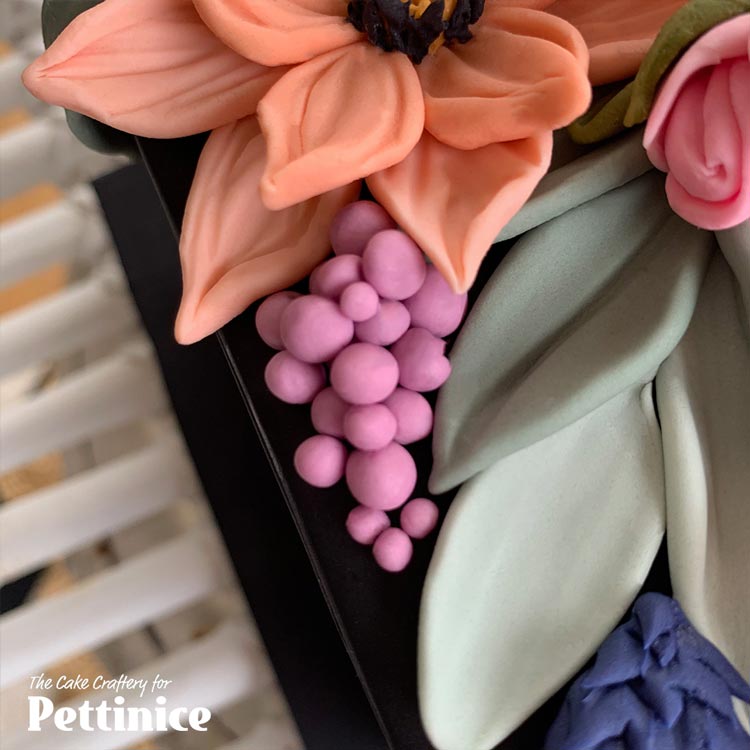
Use the lilac colour to either make sprigs of tiny berries by rolling tiny balls...
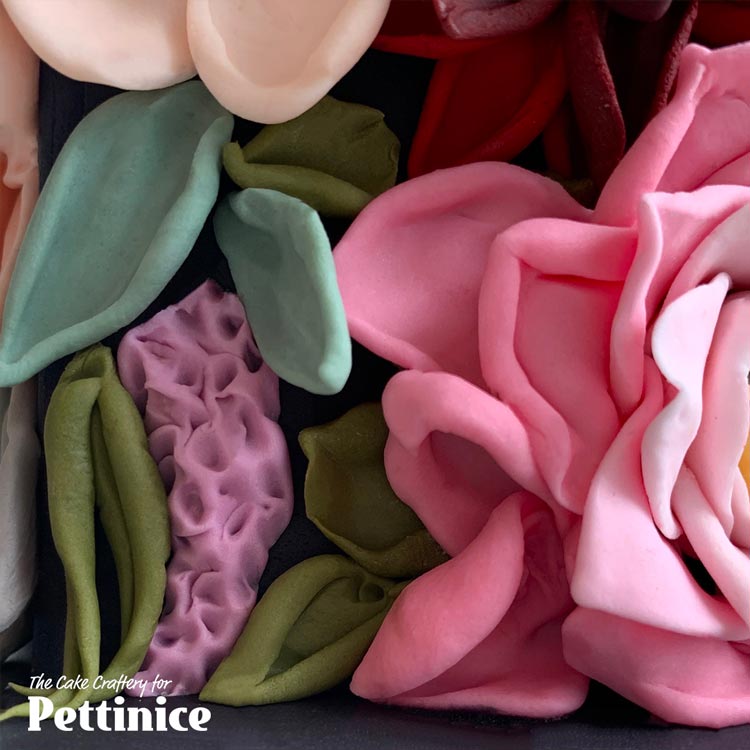
...or make elongated teardrops and texture all over with dresden tool. Or do some of each.
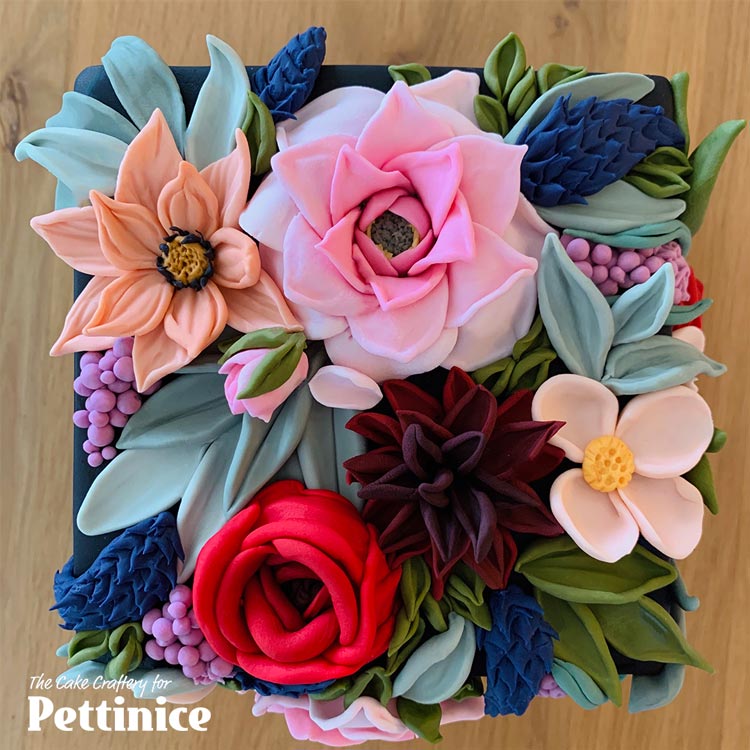
The tops and each side of the cake all have one each of the main flowers and then a selection of the filler flowers and leaves. I positioned them randomly on each side so that it didn’t look like a repeating pattern but you could choose to repeat this same layout on each side if you prefer that look.
There is no limit to the shapes and colours you can mix up using Pettinice for this type of cake - so enjoy and have some fun with it!
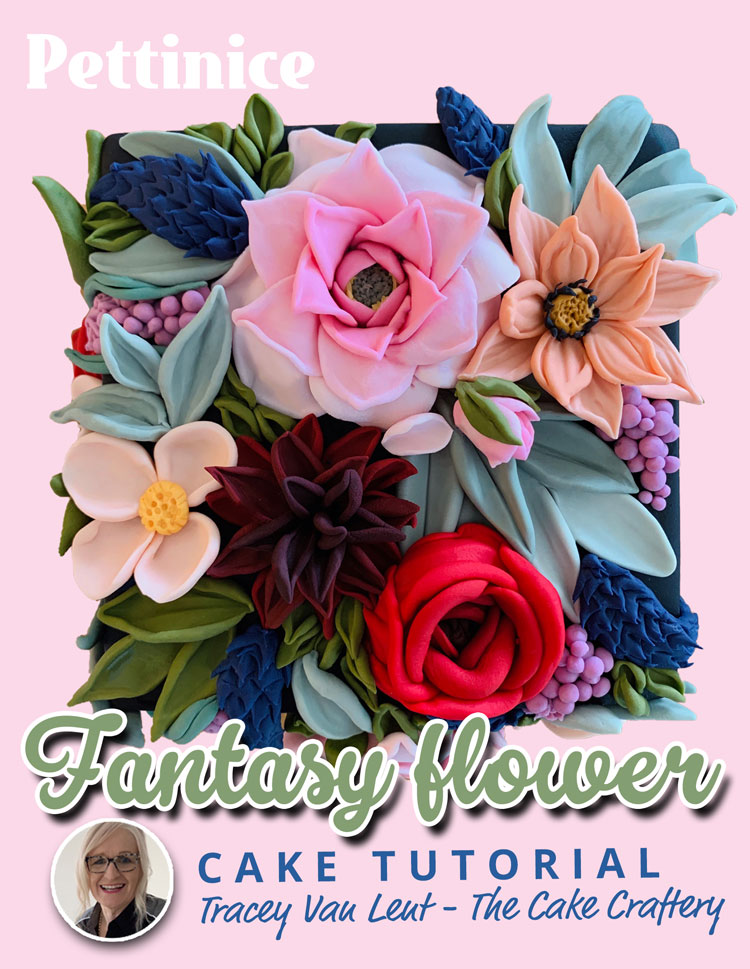

Tracey van Lent owns The Cake Craftery in Riverhead, Auckland. Tracey’s background is in art and design and she gained a Bachelor’s Degree in Visual Communications when her four children were young. She has been decorating cakes for many years and has taught classes in her local community in North-West Auckland in more recent years.
She loves working with Pettinice in every aspect of her fondant work and particularly likes the unlimited palette of colours that can be produced by just mixing together the colour range.
See more of Tracey's cakes at








